Two
LARCHMONT LIFE
Mayberry, the fictional town of The Andy Griffith Show, is often used to describe Larchmont. It is fitting that Hollywood would help define Larchmont, as their histories are intertwined with nearby Paramount Studios and Sunset Gower Studies. Larchmont’s small-town appeal comes in part from the business plan envisioned by Julius La Bonte in 1921, when he populated the street with neighborhood-serving stores operated by owners committed to personalized service.
First, there were grocery stores and dry goods stores like Landis Department Store that catered to the large estates nearby. There were also banks and real estate offices, helping newcomers purchase homes. For everyday life, there were dry cleaners, bakeries, coffee shops, and toy stores. Then came specialty shops like Balzer’s Market that offered the finest selection of gourmet foods and Chevalier’s Books that catered to the well educated. As businesses took root on Larchmont Boulevard, they became civic leaders, caring for the community with the shared values of service and excellence instilled by La Bonte in those early years.
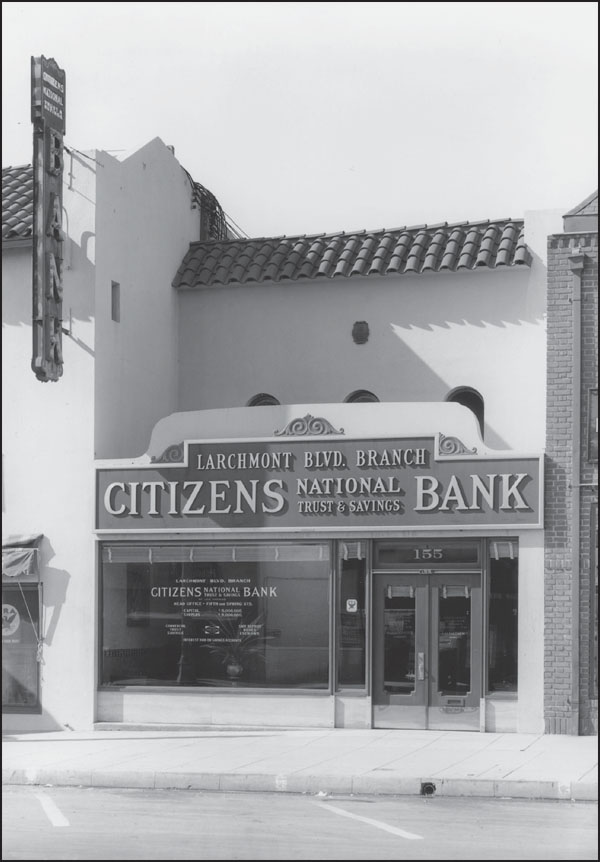
CITIZENS TRUST AND SAVINGS BANK AT 155 LARCHMONT BOULEVARD, 1927. Citizens Trust and Savings Bank was a Los Angeles–based bank incorporated in 1911. C.E. Toberman, a real estate developer known as “Mr. Hollywood,” served as a director of the bank. He was called “Mr. Hollywood” for his role in developing Hollywood and many of its landmarks, including the Hollywood Bowl, Grauman’s Chinese Theater, and the Roosevelt Hotel. (Courtesy of Marc Wanamaker at Bison Archives.)
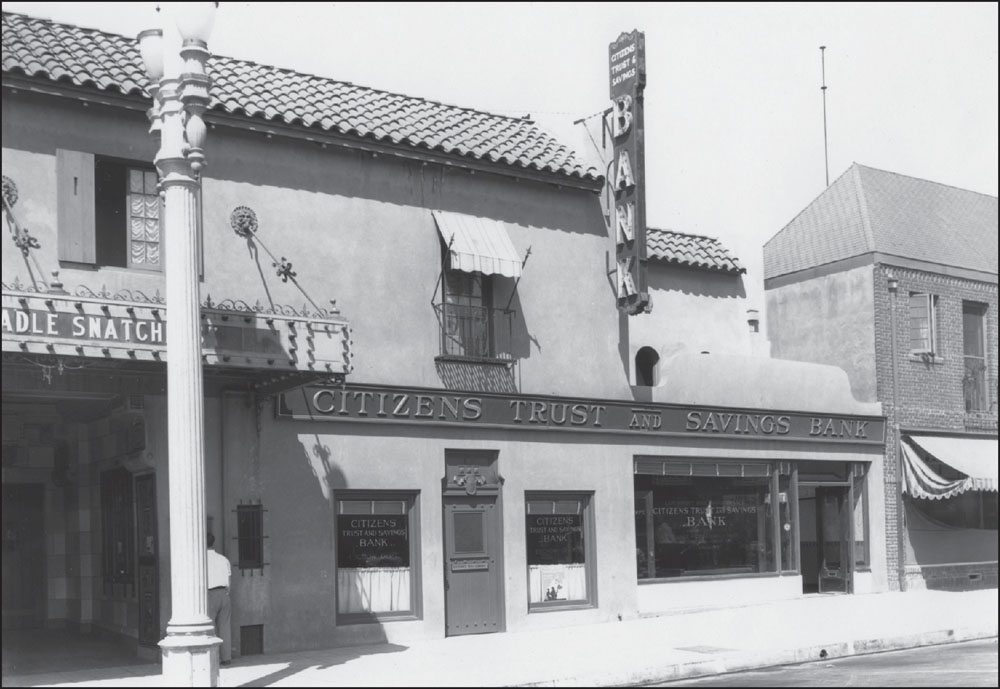
CITIZENS NATIONAL TRUST AND SAVINGS BANK AT 155 LARCHMONT BOULEVARD, 1933. In 1928, the bank changed the name to Citizens National Trust and Savings Bank, reflecting the consolidation with Citizens National Bank. The bank operated in the northwest corner of the building, which was constructed by Julius La Bonte in 1921 as a moving picture theater and store. (Courtesy of Marc Wanamaker at Bison Archives.)

SECURITY FIRST NATIONAL BANK OF LOS ANGELES, 1929. Pictured is the elegant interior of the Security First National Bank branch on Larchmont Boulevard. (Courtesy of Marc Wanamaker at Bison Archives.)
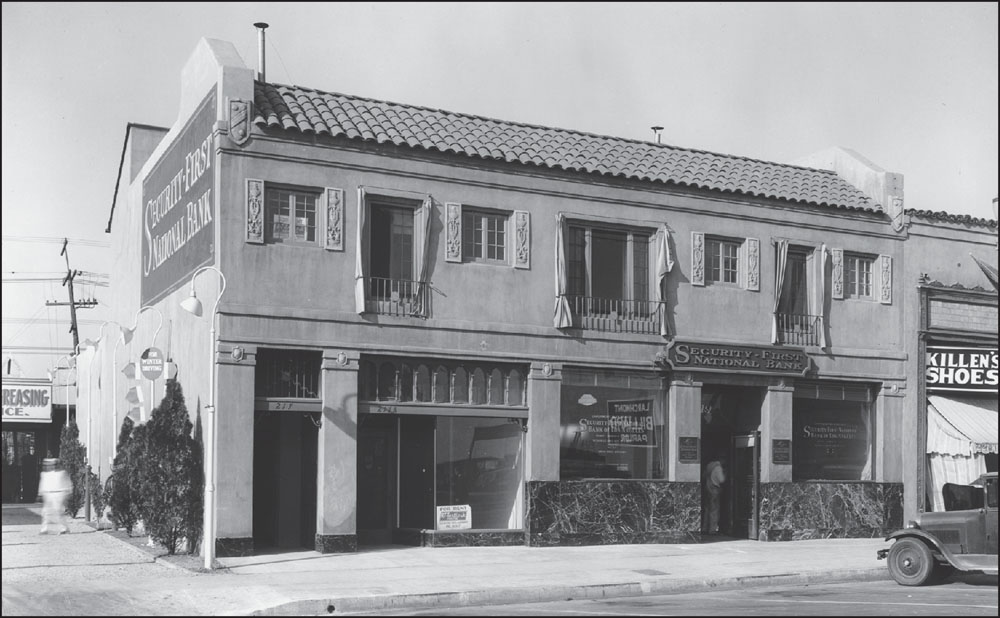
SECURITY FIRST NATIONAL BANK OF LOS ANGELES, 1930. Security First National Bank, founded in Los Angeles in 1889 as Security Savings Bank and Trust, merged with First National Bank in 1929, becoming Security Pacific in 1968 and finally Bank of America in 1991. (Courtesy of Marc Wanamaker at Bison Archives.)
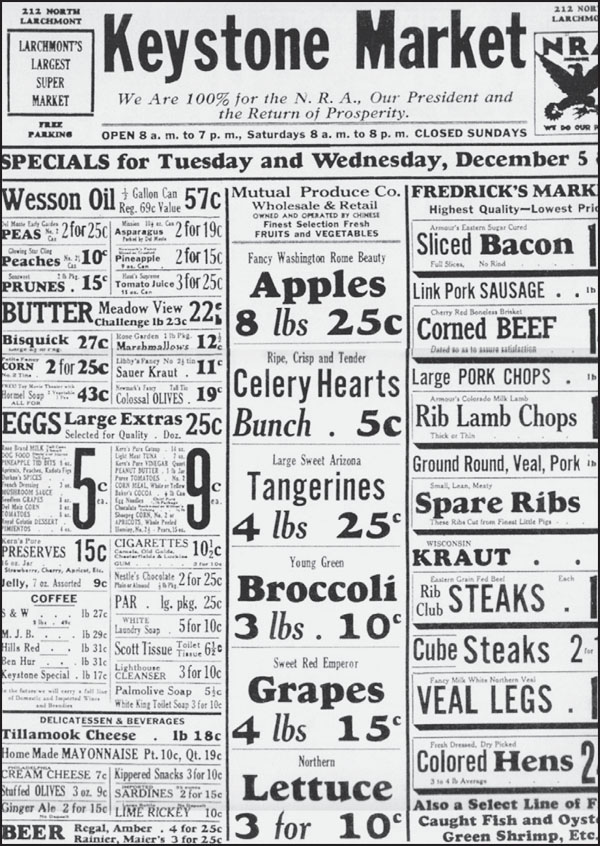
KEYSTONE MARKET AT 212 NORTH LARCHMONT. Over the years, Larchmont shoppers had many choices when it came to shopping and groceries. This advertisement from the Keystone Market boasts that it is the largest supermarket on the street and features the National Recovery Administration (enacted in 1933) symbol, showing support for the New Deal program intended to promote economic recovery after the Great Depression.
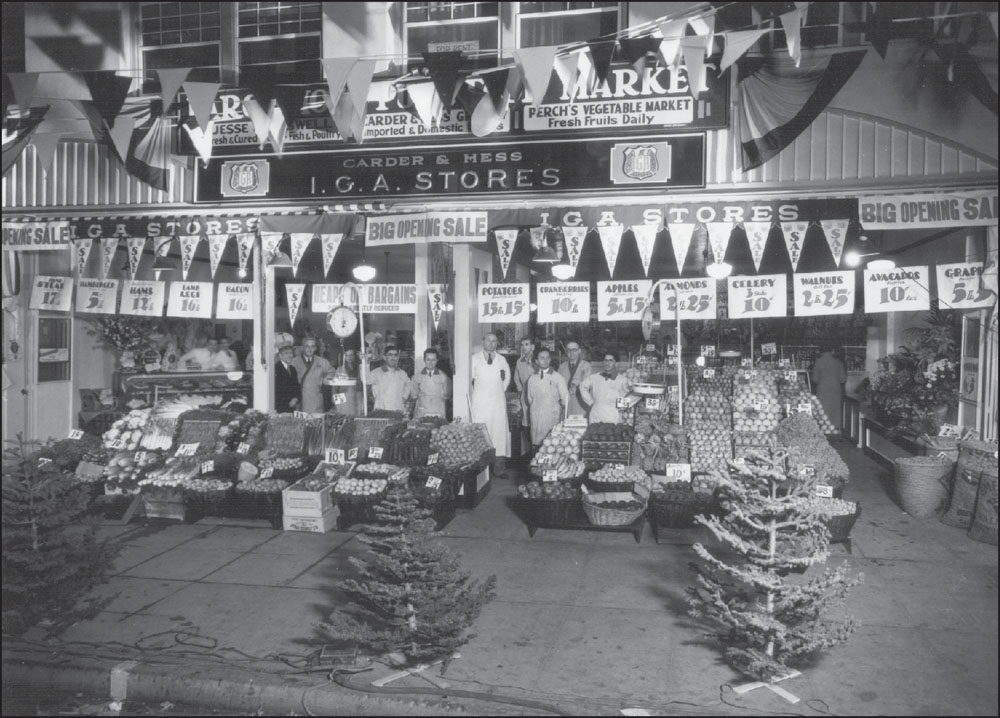
CARDER AND HESS IGA GROCERY AT 245 NORTH LARCHMONT, DECEMBER 16, 1932. The Independent Grocers Alliance (IGA), founded in 1926, was a consortium of local independent grocers across the United States. Each store was locally owned and operated like a franchise. This photograph shows the staff during the holiday season in 1932. This was one of several grocery stores on Larchmont Boulevard. (Courtesy of the Los Angeles County Natural History Museum.)
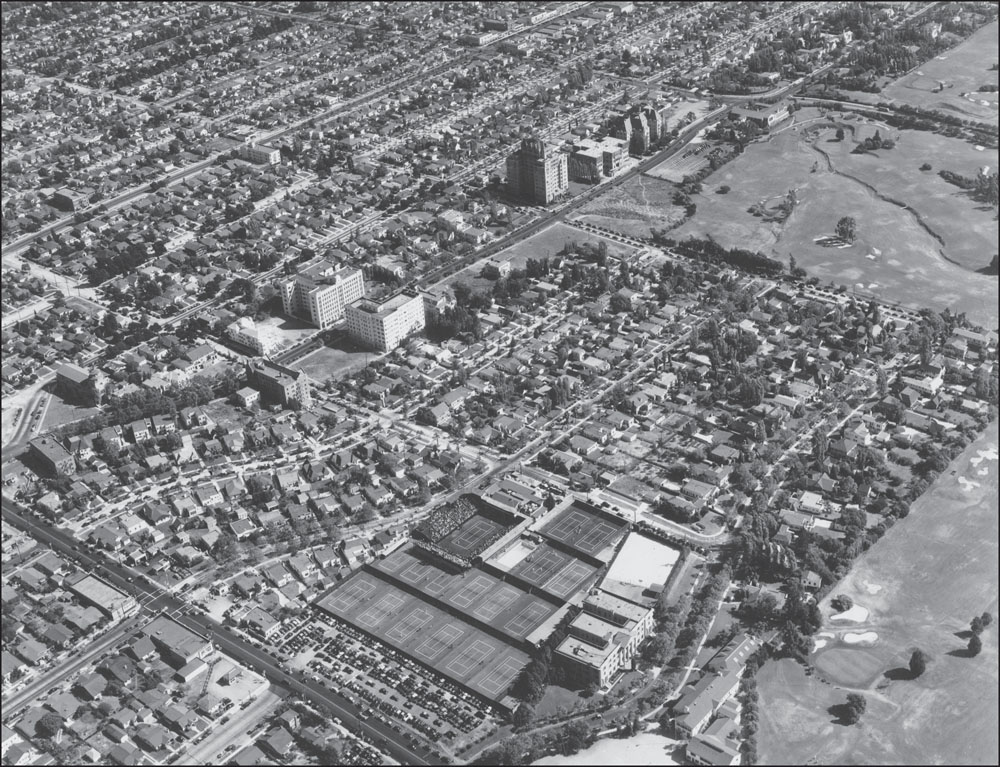
AERIAL PHOTOGRAPH, 1937. Larchmont Boulevard is pictured at the upper-left edge. Los Angeles native Thomas Bundy—three-time US doubles champ, member of two Davis Cup teams, winner of three Southern California Tennis Association titles, and newlywed to May Sutton (the first non-British woman to win Wimbledon)—organized the purchase of five acres of lemon groves along Melrose Avenue to build the Los Angeles Tennis Club in 1927, adjacent to the elite, new residential neighborhood of Hancock Park and the Wilshire Country Club. (Courtesy of the UCLA Spence Air Photo Collection.)
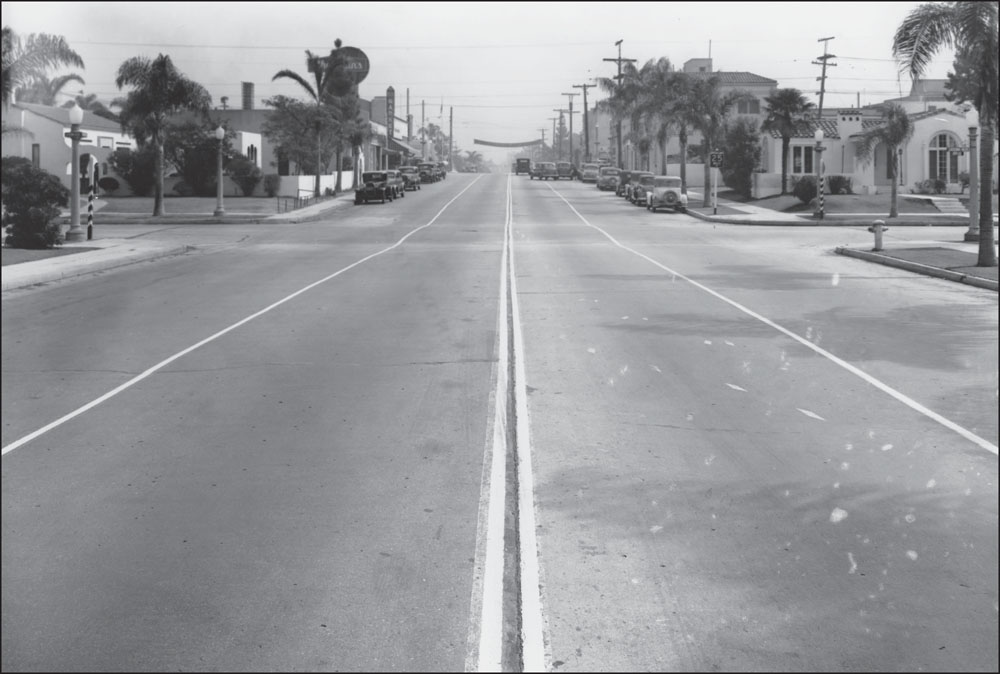
BEVERLY BOULEVARD LOOKING EAST TOWARD LARCHMONT BOULEVARD, 1938. Here is a view of the approach to the intersection of Larchmont and Beverly Boulevards, passing Lucerne Boulevard. Ahren’s Kitchen is located in the Spanish-style building on the corner of Larchmont and Beverly. Other businesses on the corner include Chapman’s Ice Cream, Beverly Cleaners, and a florist on the corner next to Ahren’s. (Courtesy of Marc Wanamaker at Bison Archives.)
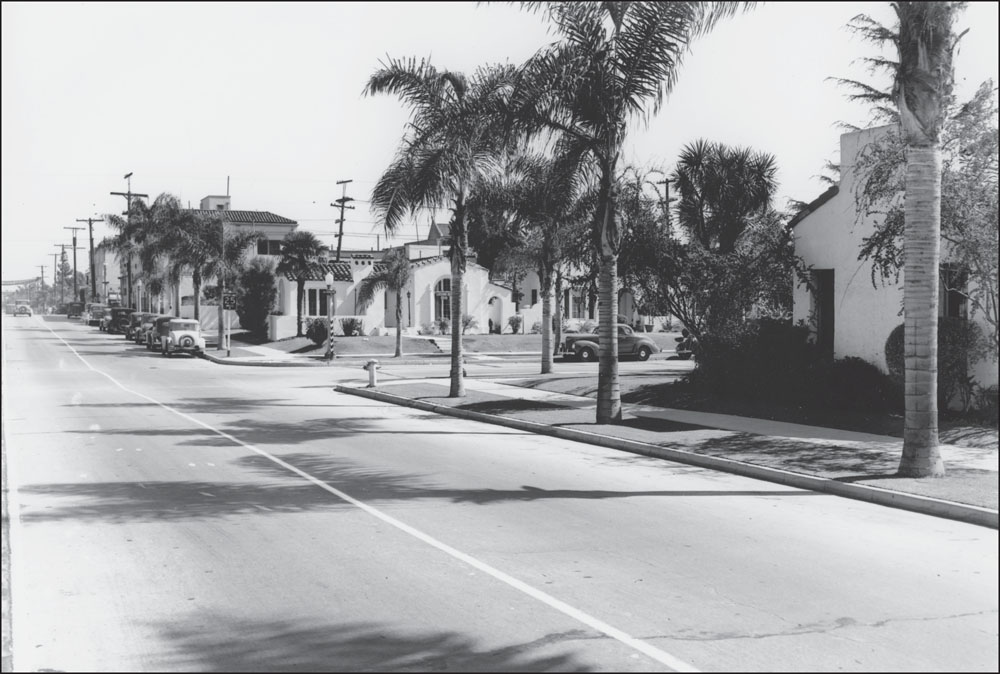
BEVERLY BOULEVARD AND LUCERNE STREET, 1938. This view looks east along Beverly Boulevard at the corner of Lucerne Street. The quaint Spanish Bungalow–style homes of the Larchmont Village neighborhood, with their concrete streets located just one block west of Larchmont, can be seen. Many of these homes look just as they did when they were constructed in 1920s. The Windsor Square Historic Preservation Overlay Zone, enacted in 2007, preserves the architectural heritage from this period.
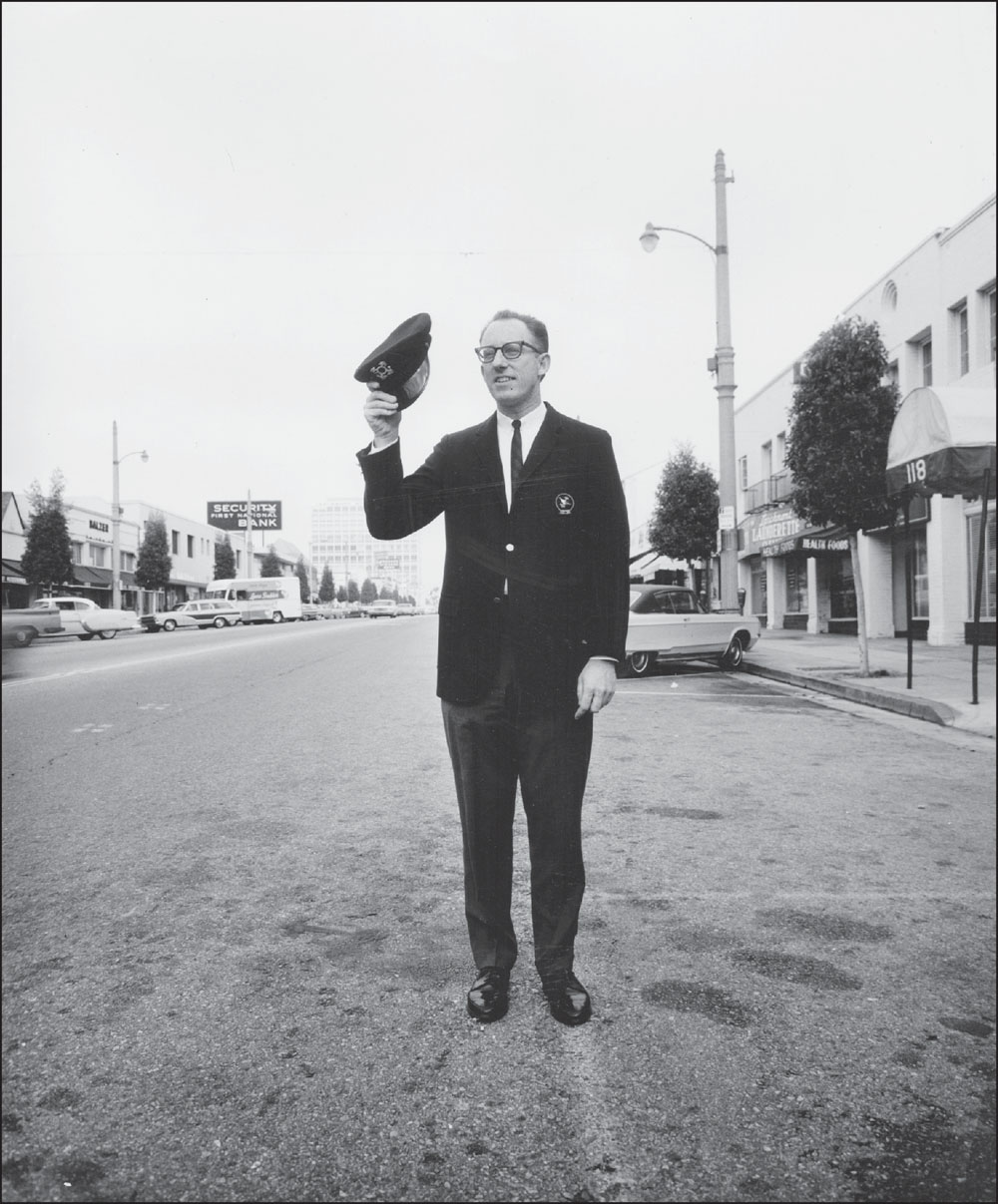
ALBERT DIPPELL. Realtor Albert Dippell is pictured in nautical attire on Larchmont Boulevard. Dippell was one of the most important realtors in developing and maintaining the residential character of Larchmont Boulevard and the surrounding neighborhoods. He came to Larchmont in 1923 after attending the School of Commerce at the University of Southern California. After exploring other parts of the city, Dippell concluded that the Wilshire district offered both stability and potential for further growth. Dippell was very active in civic affairs.
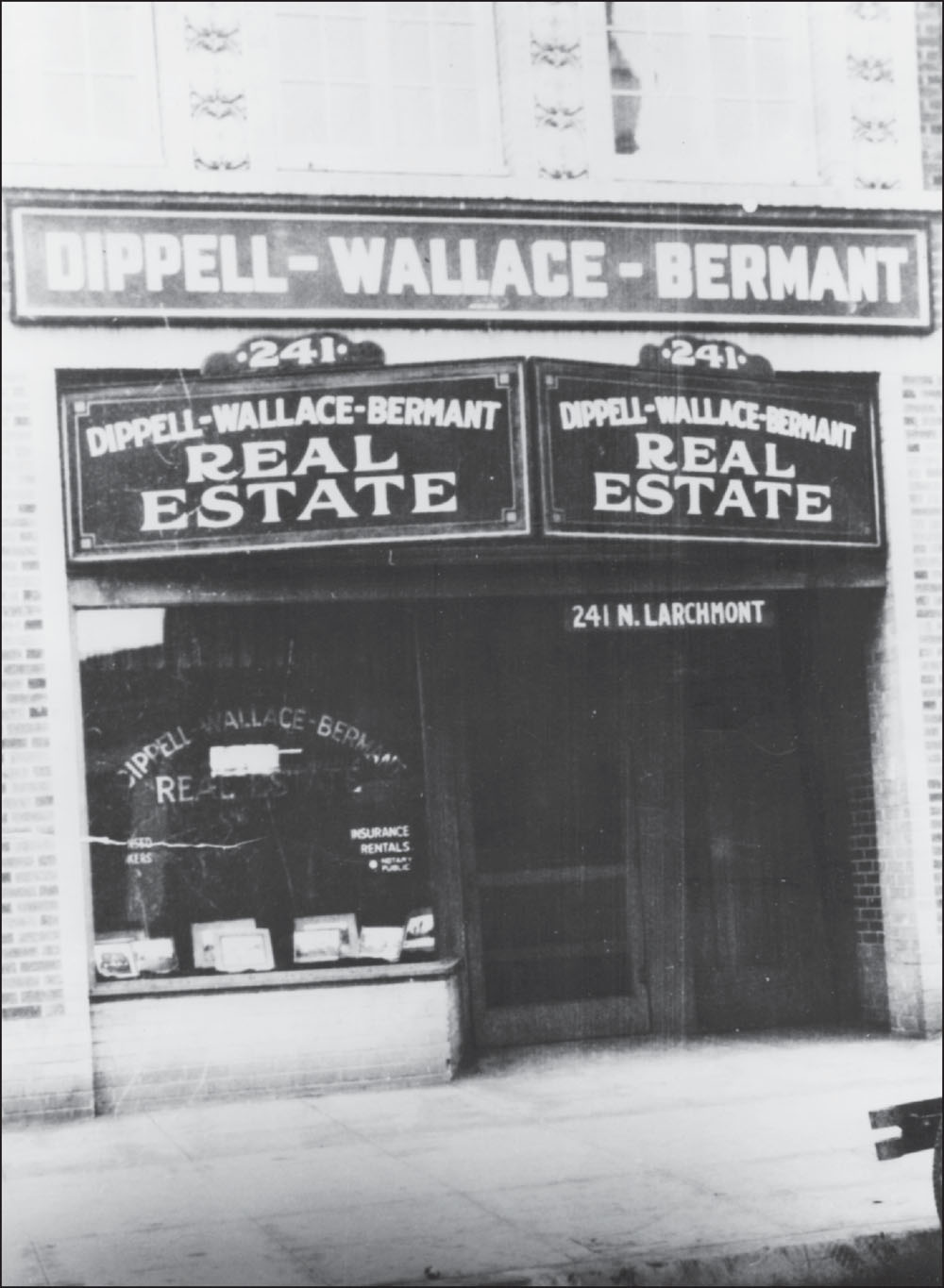
DIPPELL, WALLACE, AND BERMANT REAL ESTATE OFFICE AT 221 NORTH LARCHMONT BOULEVARD. Here is the early office of Albert Dippell, Ira Bermant, and Harry Wallace. The partnership lasted 15 years before the men went their separate ways. In 1932, Dippell moved his office to 107 North Larchmont Boulevard. His son Howard joined the family business in 1955, followed by his brother Cutler two years later.
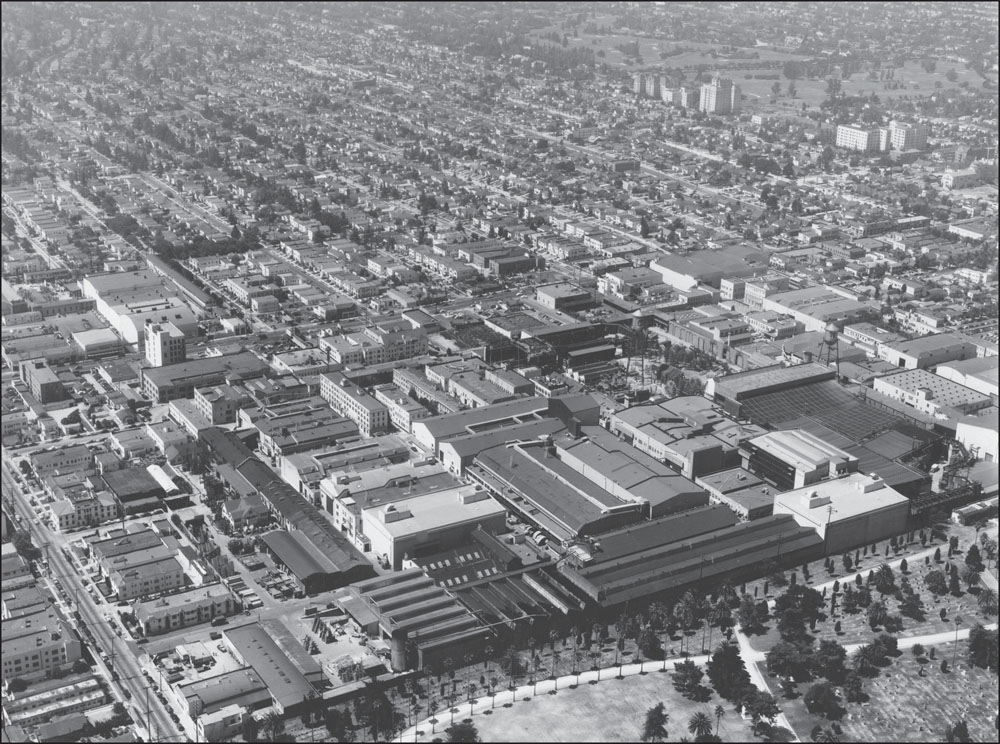
AERIAL VIEW OF PARAMOUNT STUDIOS, 1947. North of Larchmont Boulevard, at Melrose Avenue, is Paramount Studios. (Courtesy of the UCLA Spence Air Photo Collection.)
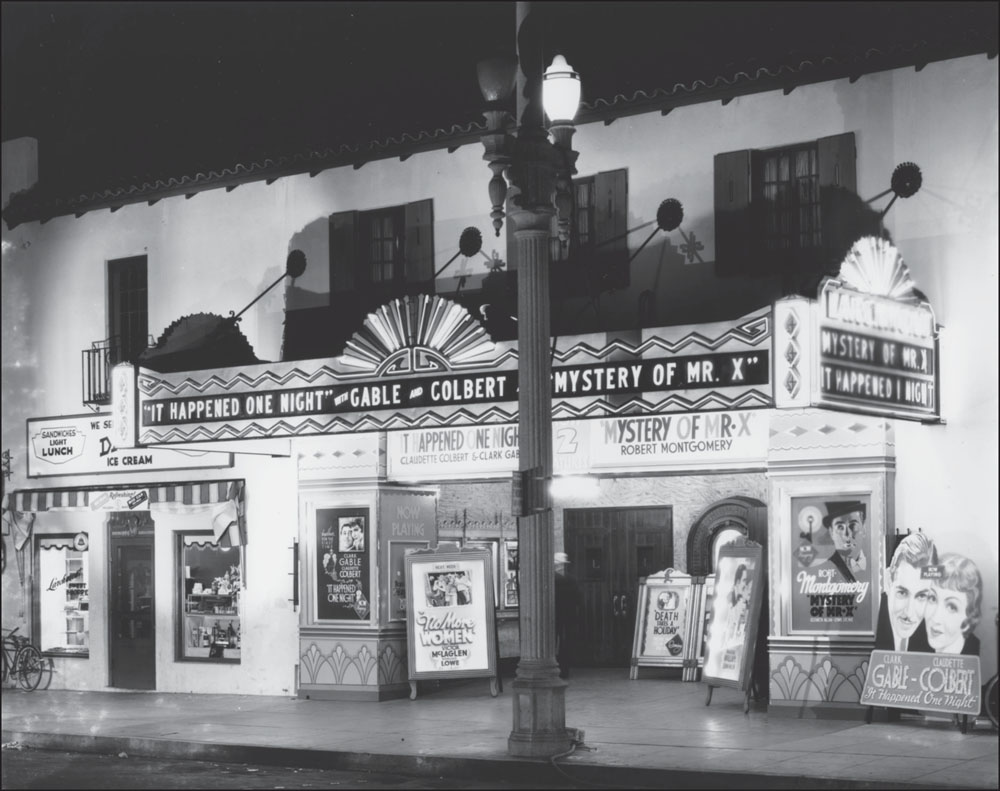
THE LARCHMONT THEATER, 1938. Built by Julius La Bonte at 155 North Larchmont Boulevard, the Larchmont Theater was a reinforced concrete construction of Mission Revival design. It was leased by Heinrich von Stein, founder of Von Stein’s Academy of Music. The auditorium seated 900 people and featured an organ that cost $40,000 according to local news reports at the time. A string orchestra was brought in for movie presentations. The theater operated until the 1950s. Charlotte Lipson, daughter of Julius La Bonte, told UCLA student Michael Scott Copper in a 1975 oral history that the theater was her father’s only architectural failure. In order to provide sloped seating, the floor of the theater was below the water table. Despite sealing the building, the theater flooded every time it rained. According to Lipson, her father filled in a stream that used to run along the west side of Larchmont and continue between Arden and Lucerne Boulevards. Perhaps this is the modern-day Arroyo del Jardin de las Flores that still flows through the Wilshire Country Club then underground until it surfaces in nearby Brookside. (Courtesy of Marc Wanamaker/Bison Archives.)
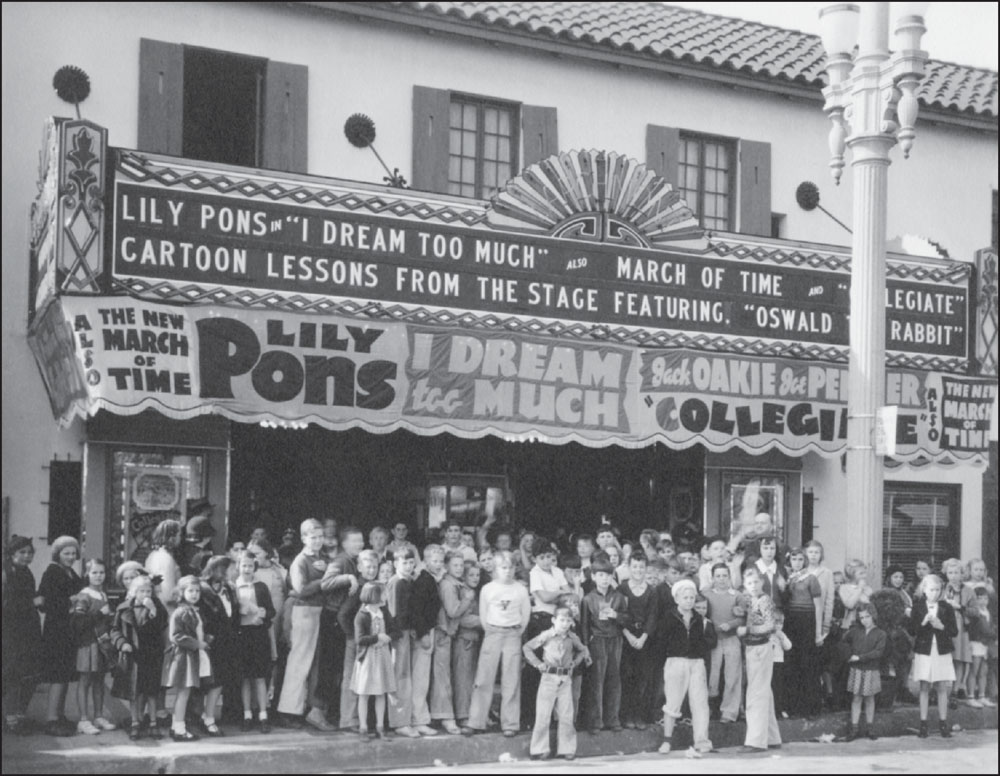
THE LARCHMONT THEATER, 1935. Children are waiting outside the theater for admission. The marquee promises “Cartoon Lessons from the Stage Featuring Oswald the Rabbit.” Oswald the Rabbit was created by Ub Iwerks and Walt Disney for funny animal films distributed by Universal Pictures in the 1920s and 1930s. Also screening was I Dream Too Much, a 1935 romantic comedy directed by John Cromwell and starring Henry Fonda, Lily Pons, and Lucille Ball in one of her earliest roles. American radio news series broadcast The March of Time aired from 1931 to 1945. There was a companion newsreel series shown in movie theaters from 1935 to 1951. The marquee advertises presentation of the newest feature. (Courtesy of Bison Archives.)
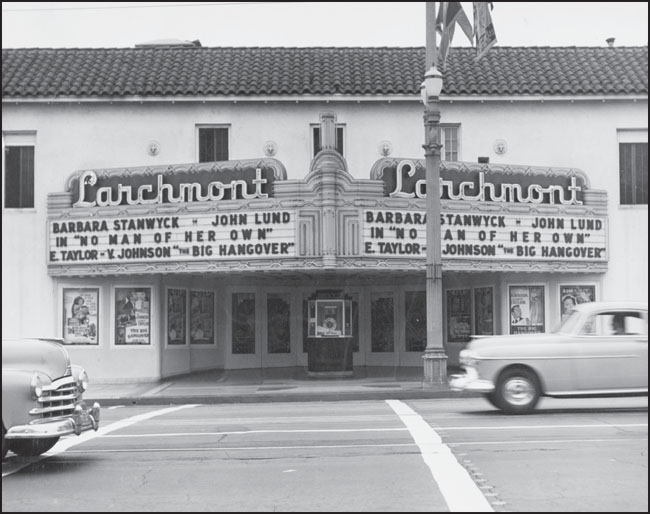
LARCHMONT THEATER, C. 1950.The marquee advertises 1950 film noir feature No Man of Her Own with Barbara Stanwyck, John Lund, Phyllis Thaxter, Jane Cowl, and Lyle Bettger. It was directed by Mitchell Leisen. (Courtesy of Marc Wanamaker at Bison Archives.)
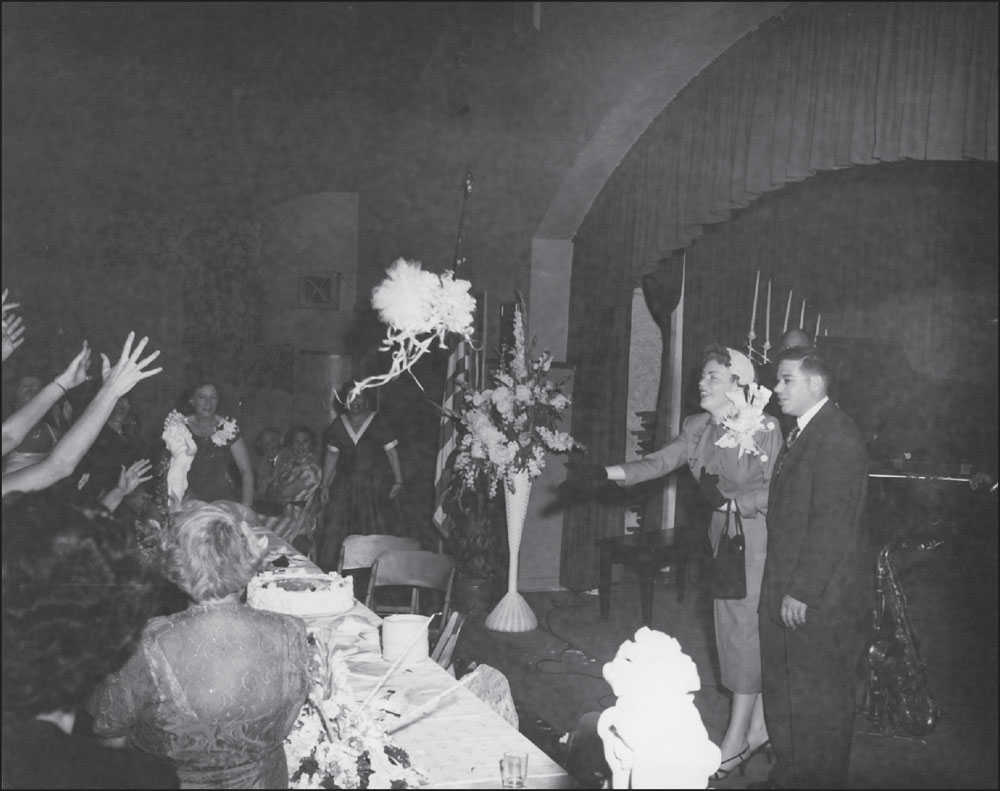
FINNERMAN-LAVITT WEDDING AT LARCHMONT HALL, 1954. Florence Shirley Lavitt married Harris Wayne Finnerman on October 2, 1954, at 7:30 p.m. in the Larchmont Hall at 118 North Larchmont Boulevard. Larchmont Hall was built in 1947. The original building on the site, constructed in 1928, held retail and offices. This image shows the interior of the hall, which featured a small stage that is still intact, though the current use of the building is an office. (Courtesy of Jason Lavitt.)
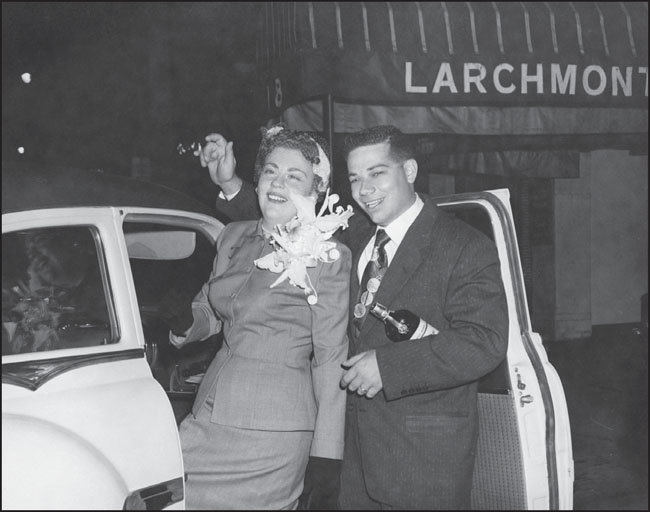
MR. AND MRS. FINNERMAN LEAVING LARCHMONT HALL. This photograph from the Finnerman wedding album shows the happy couple leaving the reception at Larchmont Hall. (Courtesy of Jason Lavitt.)
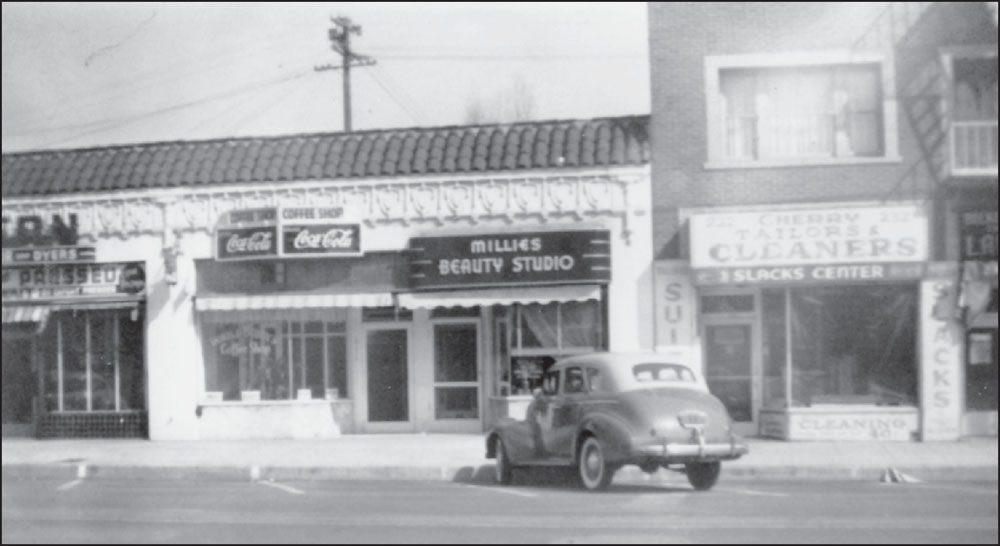
MILLIE’S BEAUTY STUDIO, C. 1942. This photograph displays a section of the east side of Larchmont Boulevard near the corner at Beverly Boulevard. The address of Millie’s Beauty Studio is not shown, but the tailoring shop next door is 232 North Larchmont, so it is likely Millie’s was at 234. The year is likely to be 1942, as the tailor, Morris Cohen, is listed in the 1942 Los Angeles telephone directory. The barrel tile roof and decorative plaster on the facade of the building are no longer there.
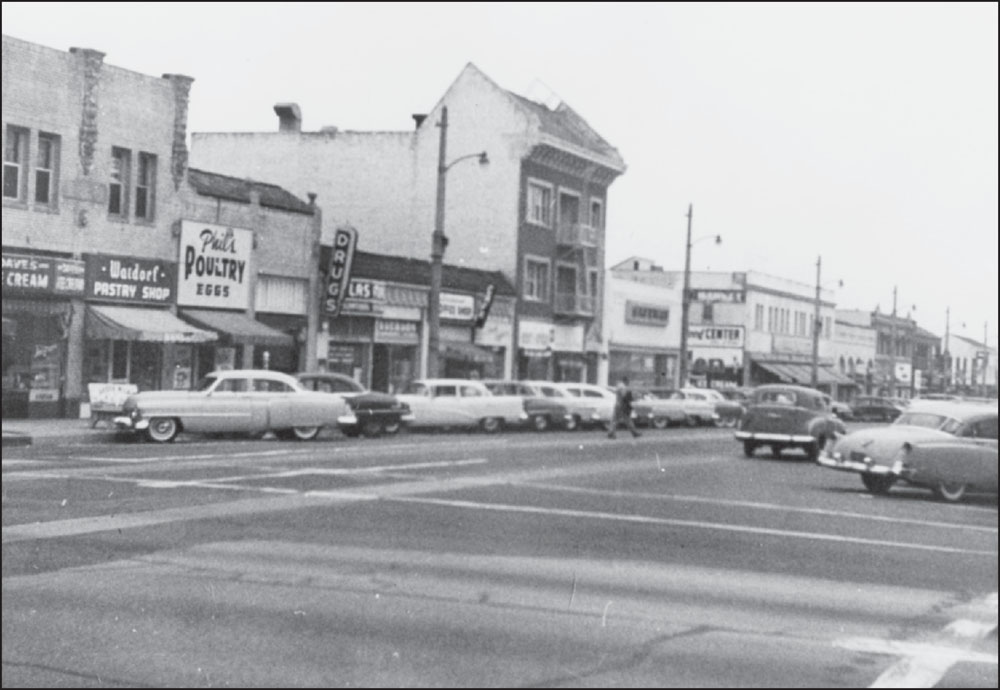
LARCHMONT BOULEVARD, C. 1950. Angled parking added to the village charm and made it easier for shoppers. This photograph shows the shops near Beverly Boulevard on the east side of the street. Phil’s Poultry at 244 North Larchmont is listed in the 1956 Los Angeles telephone directory.
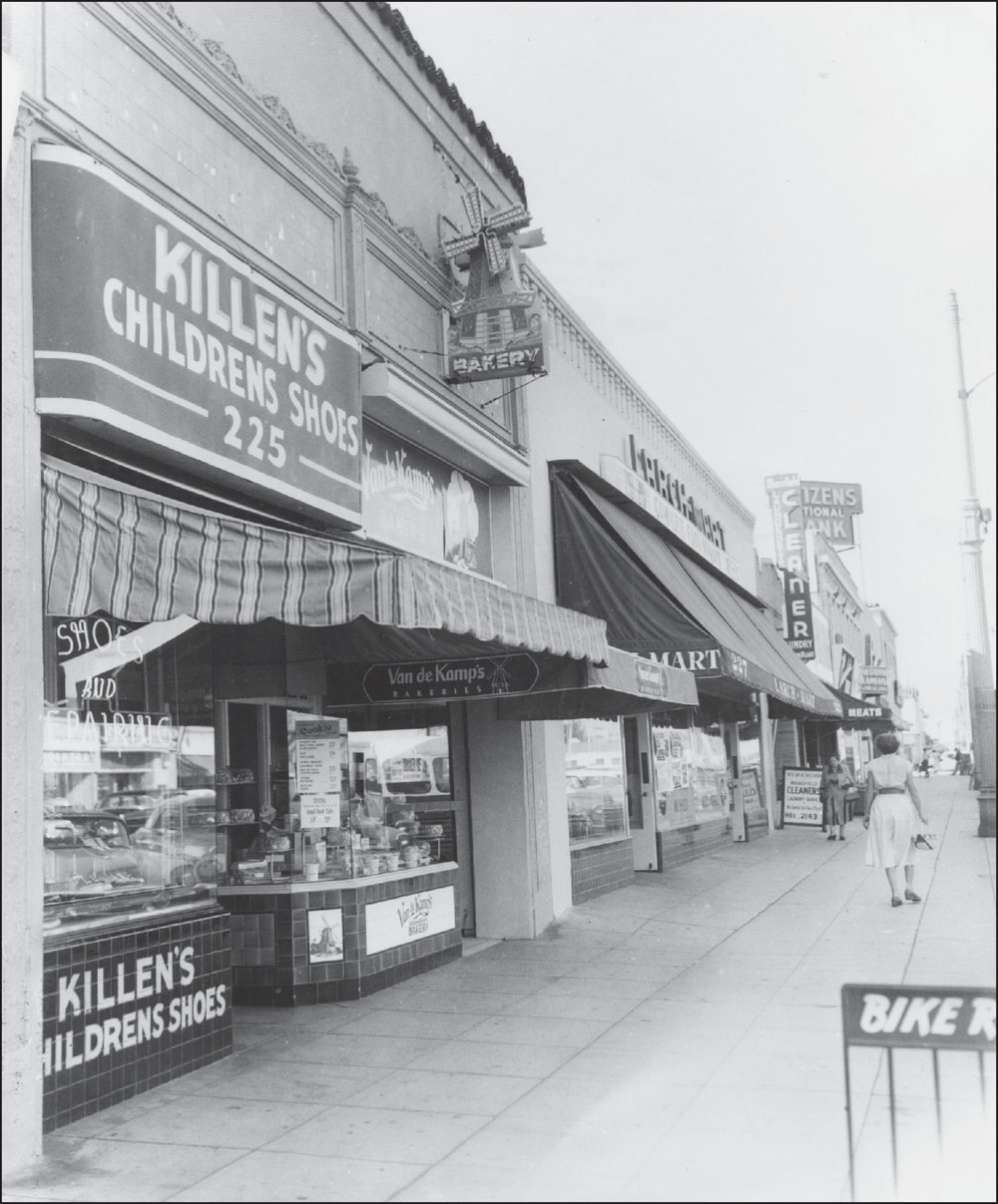
KILLEN’S CHILDREN’S SHOES AT 225 NORTH LARCHMONT, 1955. Shops and businesses moved up and down the street. Killen’s Children’s Shoes was listed in the 1936 Los Angeles telephone directory at 217 North Larchmont Boulevard and then in 1942 and 1956 at this location on Larchmont Boulevard.
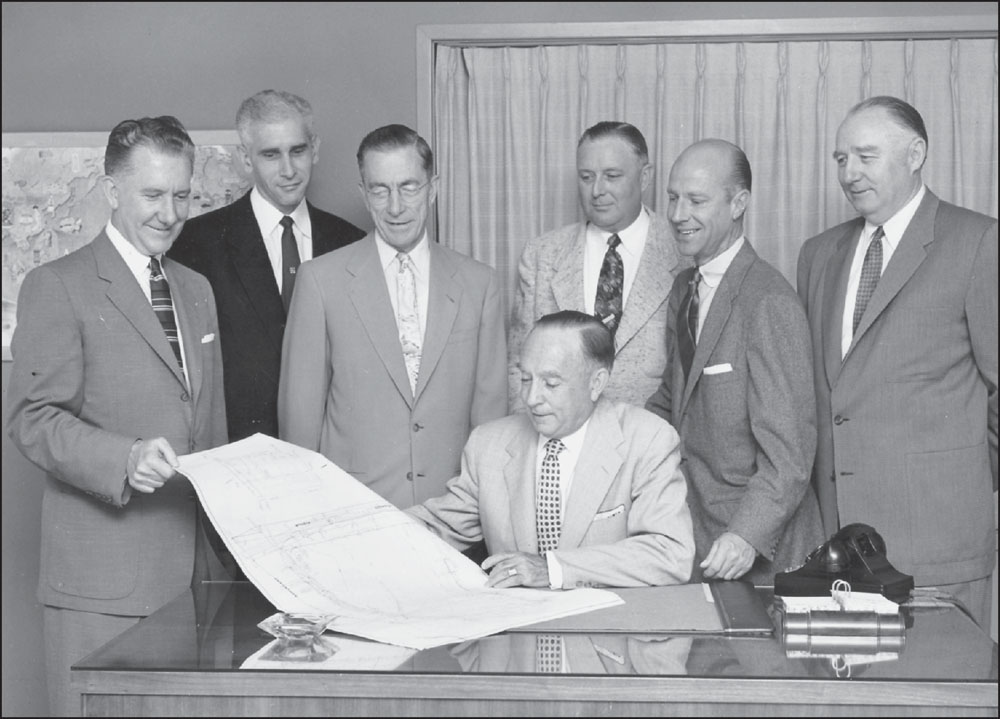
LOS ANGELS CITY COUNCILMAN HAROLD HENRY AND LARCHMONT LEADERS REVIEW PLANS FOR LARCHMONT BOULEVARD IMPROVEMENTS, 1955. With the help of city councilman Harold Henry and the Wilshire Chamber of Commerce, business leaders implemented improvements that included removing the streetcar tracks and utility poles, repaving the streets, and planting over 40 trees. Pictured with city councilman Harold Henry (seated at desk) are, from left to right, Lee Etheridge, manager of Security First National Bank; Joe Chevalier, owner of Chevalier’s Books; Frank Mann, chairman of the chamber’s small business committee; Jack Killingsworth, vice president and manager of Citizen National Bank; Robert Balzer, owner of Balzer’s; and Albert Dippell, owner of Dippell Realty Company. (Courtesy of the Larchmont Chronicle and Los Angeles Times.)
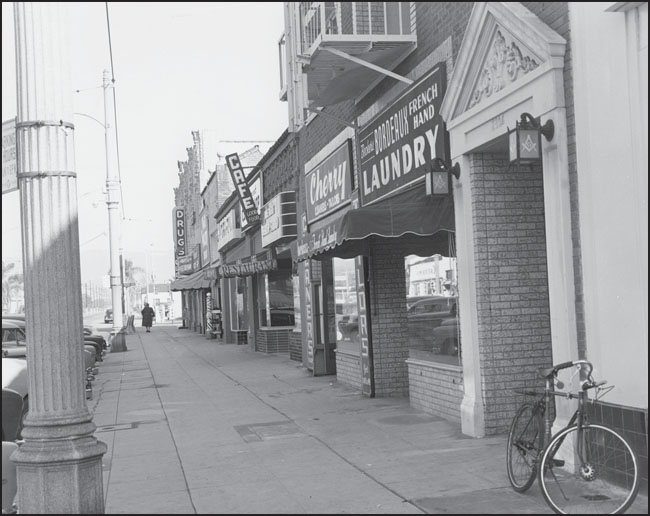
230 NORTH LARCHMONT BOULEVARD, 1952. Here is a view of the east side of Larchmont, near Beverly Boulevard, before the installation of trees.
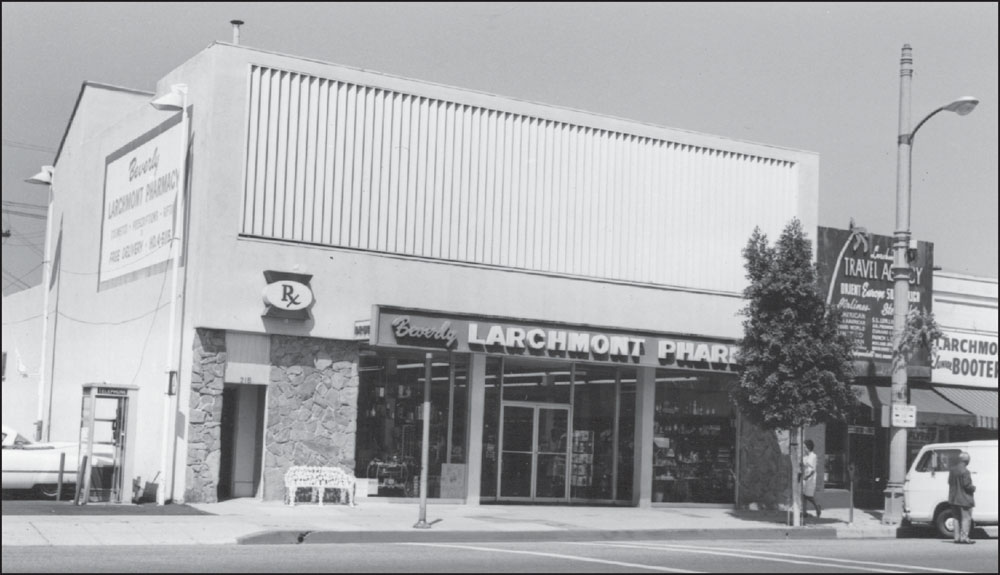
BEVERLY LARCHMONT PHARMACY AT 217 NORTH LARCHMONT. The Beverly Larchmont Pharmacy, owned by Bill Schulhoff, was the place for all things medical and a wide array of beauty products. The store had 15,000 to 20,000 different items and 11 salespeople to offer personalized service.
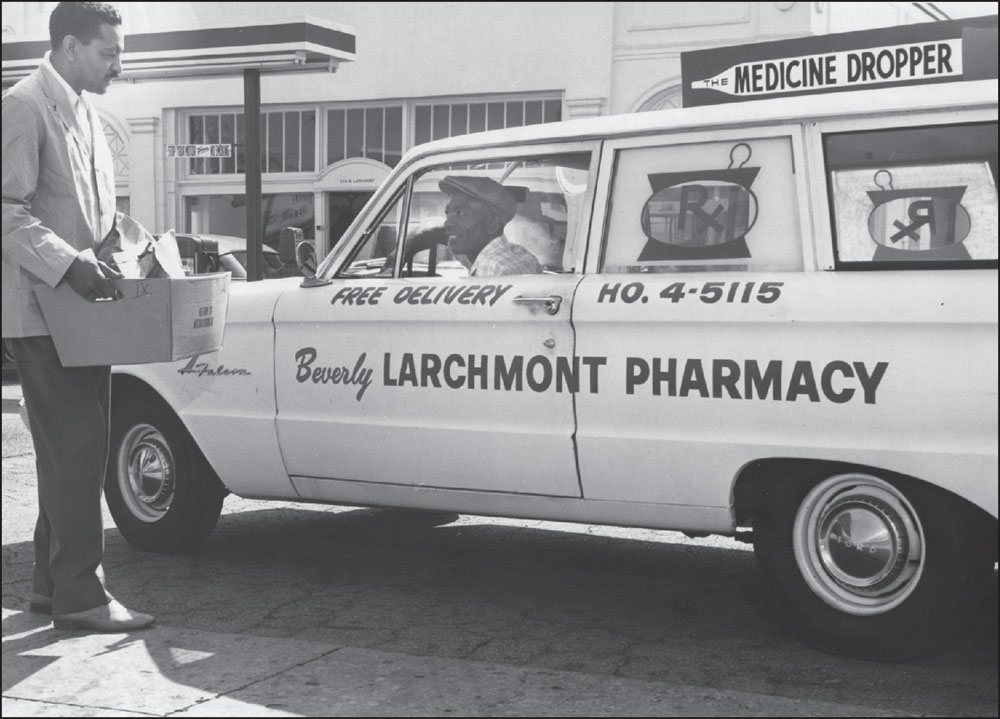
THE MEDICINE DROPPER—BEVERLY LARCHMONT DELIVERY SERVICE. The Beverly Larchmont Pharmacy delivery truck made an average of 500 deliveries a week. The store had three pharmacists, including owner Bill Schulhoff. The pharmacy filed half a million prescriptions in the store’s 13 years on Larchmont Boulevard according the Larchmont Chronicle in 1964.
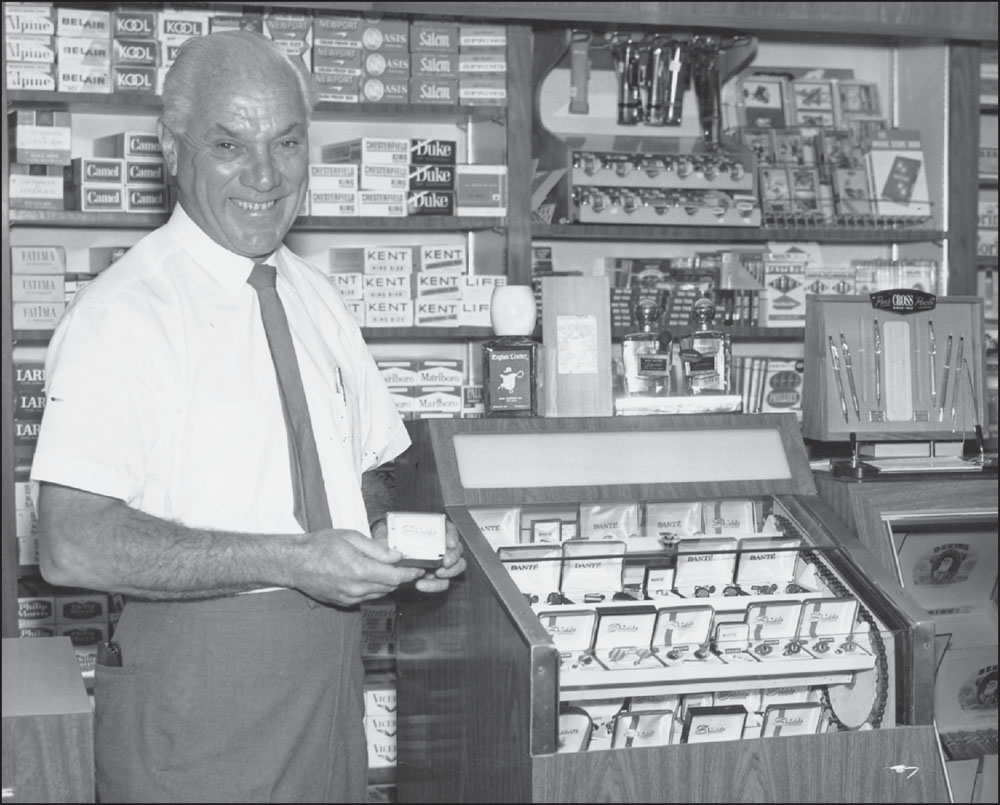
AT THE SHIELDS JEWELRY DISPLAY, BILL SCHULHOFF SUGGESTS A MONEY CLIP AS A SUITABLE GIFT FOR A MAN. Bill Schulhoff graduated from the University of Southern California School of Pharmacy in 1939. He established the pharmacy in 1951 at the corner of Larchmont and Beverly Boulevards before relocating to 217 North Larchmont in 1960. In the October 1963 edition of the Larchmont Chronicle, Schulhoff urged parents to get vaccines for their children in his “To Your Health” advice column. He also served as president of the Larchmont Businessmen’s Association in 1964.
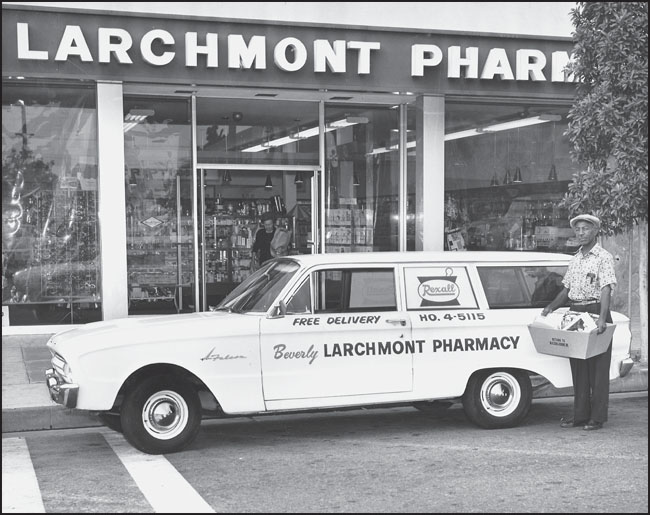
THE BEVERLY LARCHMONT PHARMACY DELIVERY TRUCK. The delivery truck prepares for a daily run of deliveries to customers in the neighborhood.
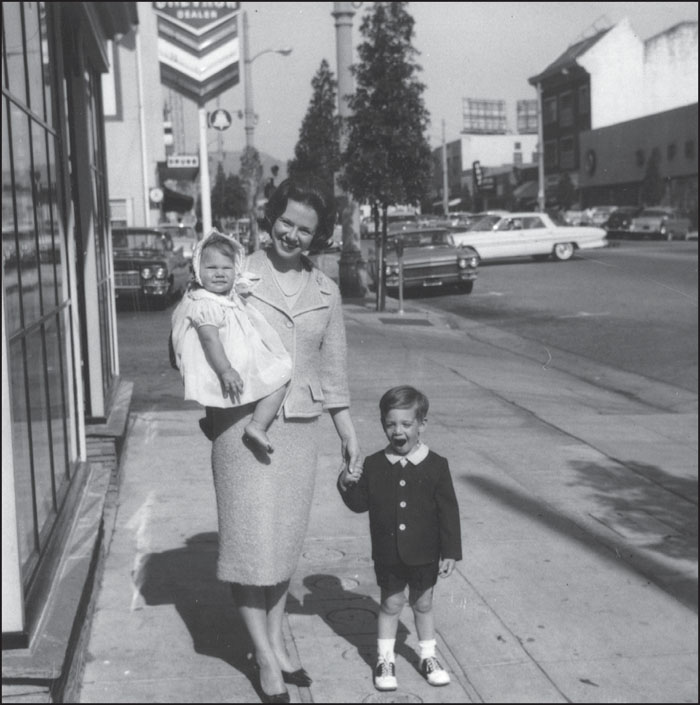
FAMILY ON LARCHMONT BOULEVARD, C. 1960. Larchmont Boulevard shops and businesses always catered to families, with a number of shops offering fine clothing and shoes for children. This photograph was taken in front of 205 North Larchmont Boulevard at Naomi Price Gary Fashions, which carried elegant clothing for women.
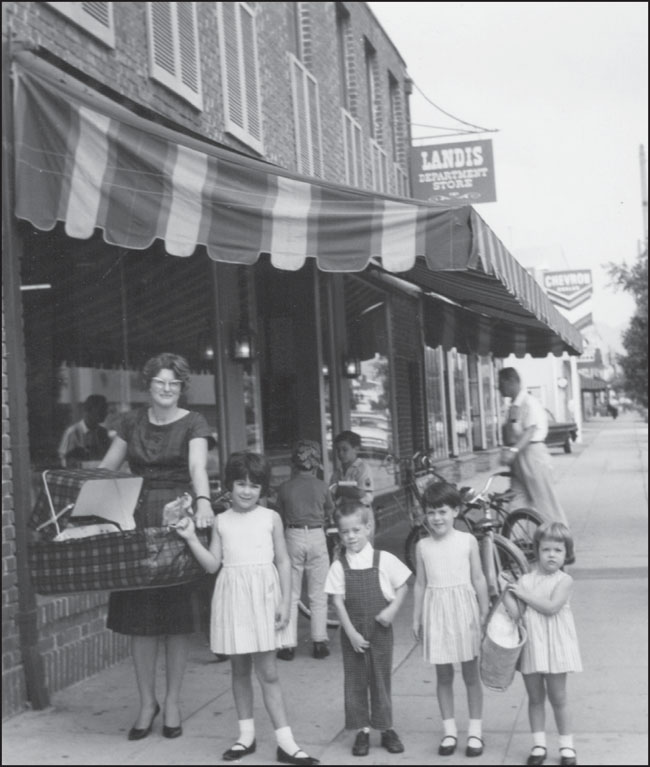
FAMILY SHOPPING ON LARCHMONT BOULEVARD, 1960. Landis Department Store carried everything a growing family needed, from clothing to toys. Children were welcome to shop in the store since the Landis staff knew everyone. Children were also very well behaved.
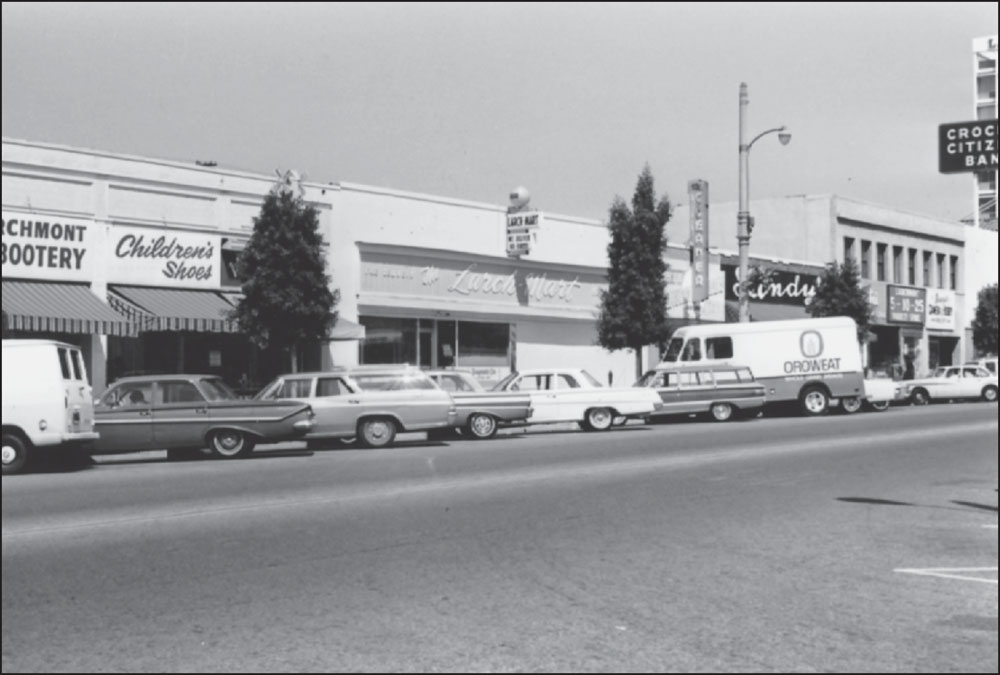
SHOPS ON THE WEST SIDE OF LARCHMONT BOULEVARD NEAR BEVERLY BOULEVARD, C. 1960. Larchmont Boulevard was populated with retail shops and businesses that served the neighborhood. Travel agents, tailors, dry cleaners, banks, and grocery stores were the mainstay of the street.
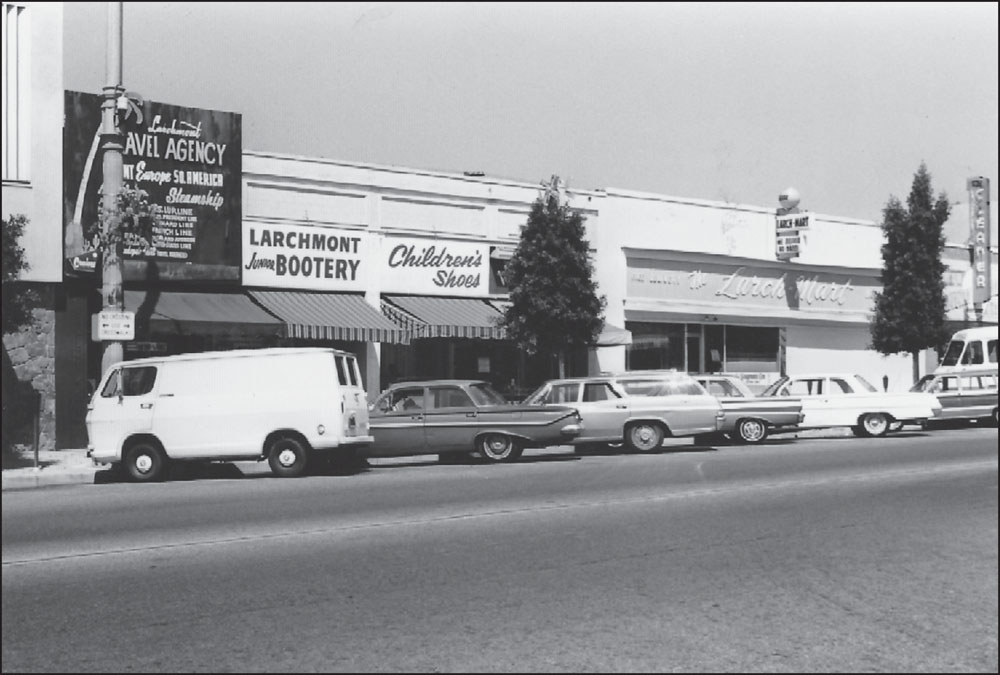
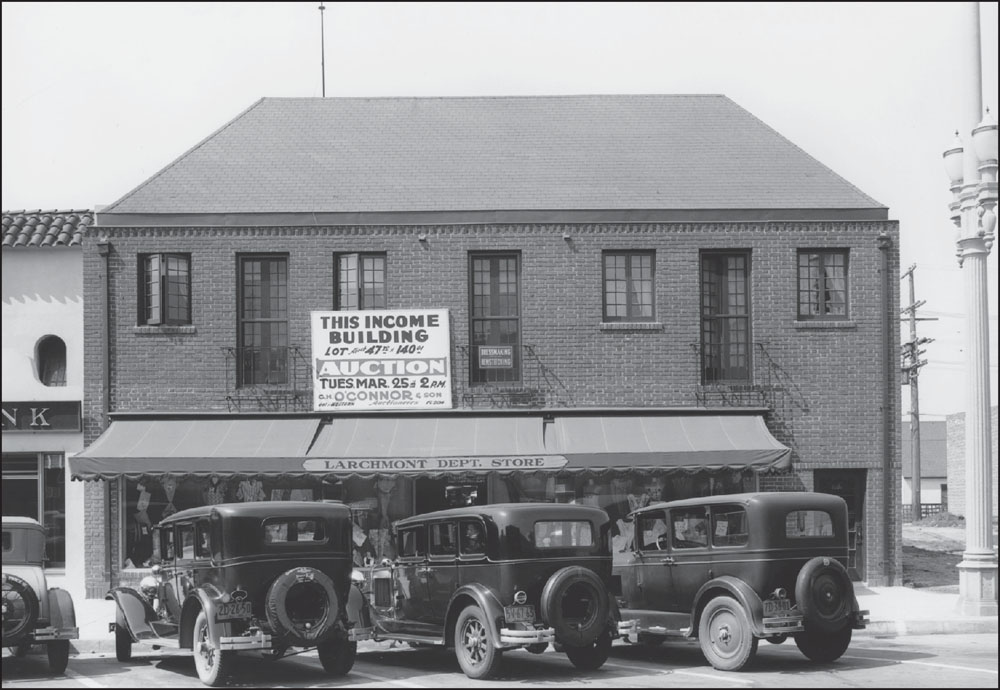
LARCHMONT DEPARTMENT STORE, 1930. Arthur Landis, considered a Larchmont pioneer, purchased the dry goods store with a loan of $400 and doubled the floor space by 1938. Born in Sterling, Illinois, in 1894, Landis moved to Los Angeles in 1905 and graduated from Los Angeles High School. He opened his first store in 1926 at Fifty-Ninth Street and Broadway and eventually operated seven stores until the Depression hit. (Courtesy of Marc Wanamaker at Bison Archives.)
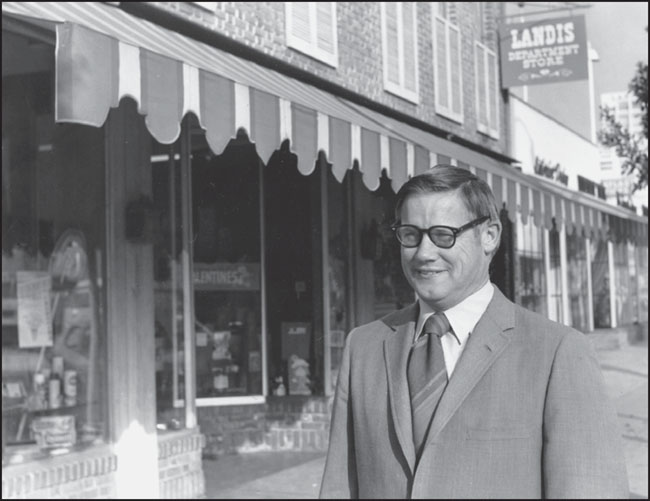
BOB LANDIS, OWNER OF LANDIS DEPARTMENT STORE, FORMERLY LARCHMONT DEPARTMENT STORE. Bob Landis grew up working in the store founded by his father, Arthur. He officially joined the family business in 1948 and devoted the rest of his life to the store and the Larchmont Boulevard community. Landis served as president of the Larchmont Boulevard Association and was supported by his wife, Betty, and their children, who all worked in the store and knew every customer by name.
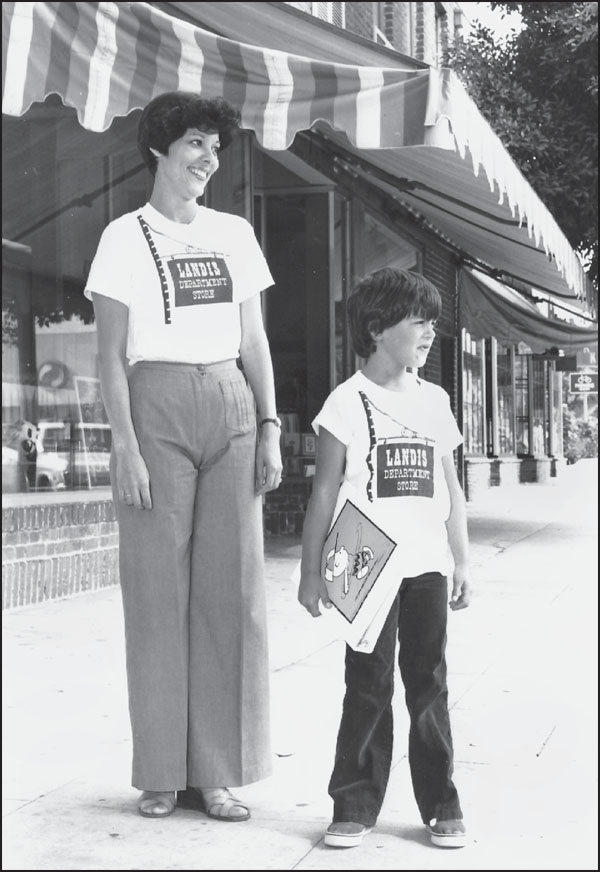
LANDIS DEPARTMENT STORE CUSTOMERS. Landis family members were good advertising for the family-run store that served the street until it closed in 1990. The name and the tradition of personal service continue at 138 North Larchmont Boulevard at Landis Gifts and Stationary, operated by Edie Frere, who Landis allowed to use the name.
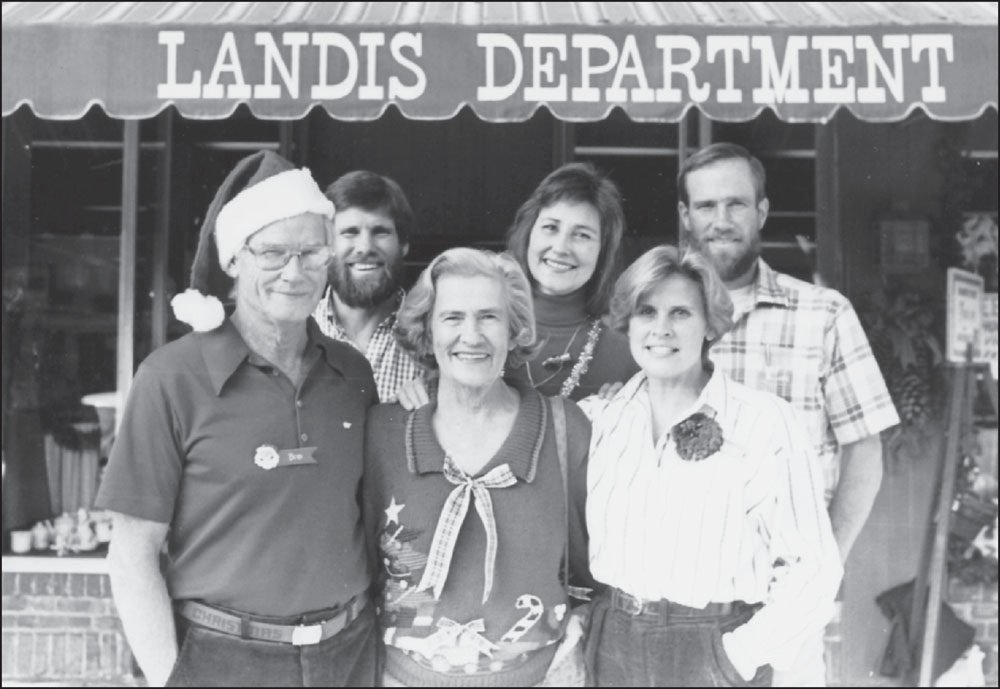
LANDIS FAMILY AT CHRISTMAS. The Landis Department Store Christmas open house was a holiday season highlight, featuring sherbet punch and butter cookies.
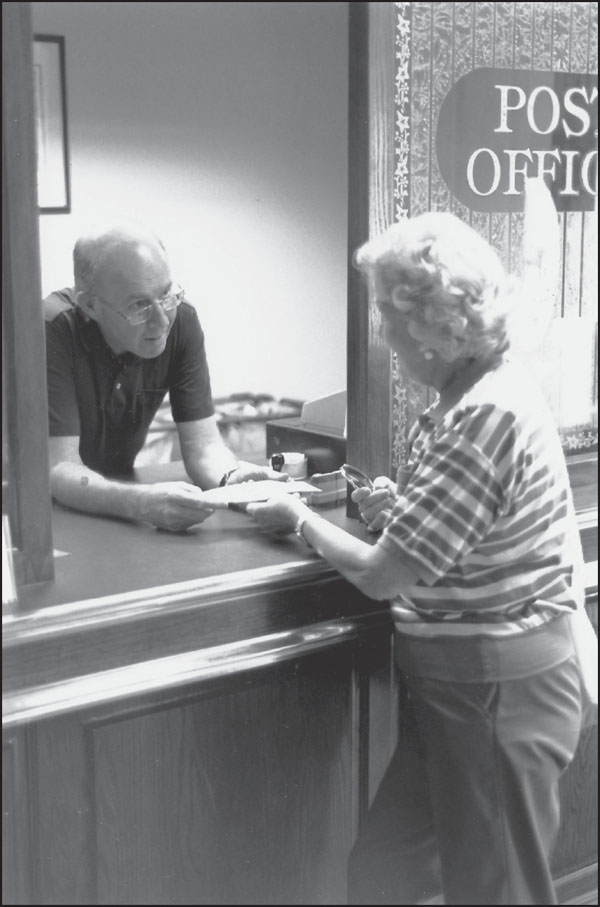
LANDIS DEPARTMENT STORE POST OFFICE. A small post office branch was located in Landis Department Store as a service for neighborhood customers.
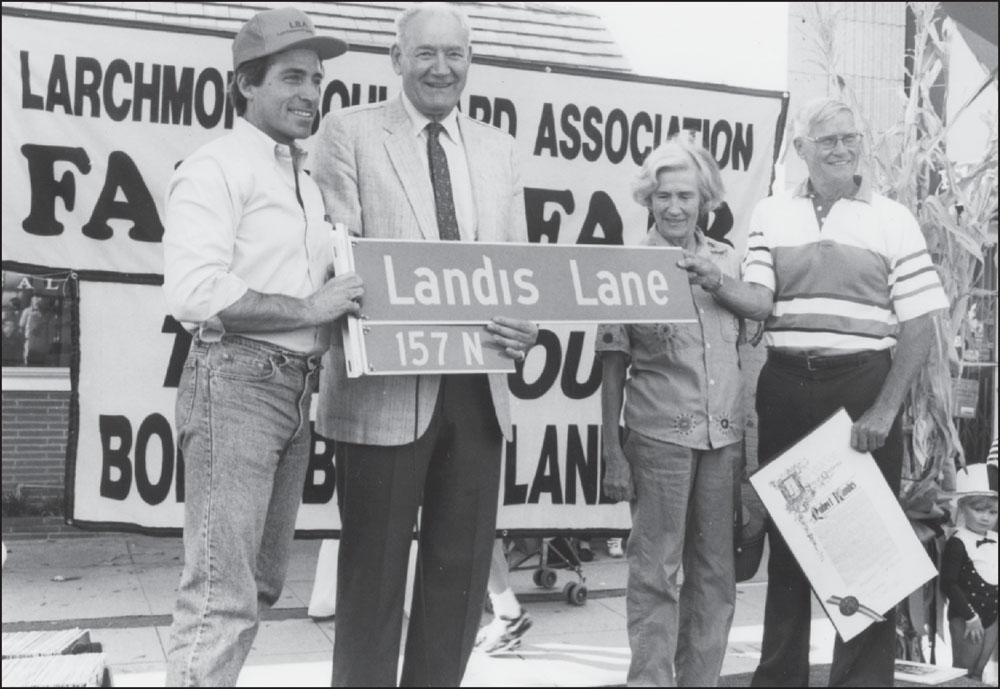
BOB LANDIS HONORED FOR YEARS OF SERVICE TO LARCHMONT COMMUNITY. In this image, city councilman John Ferraro (second from left) presents the Landis Lane sign to Bob Landis (far right), along with Tim Grogan (far left) and Bettie Landis. Landis served as president of the Larchmont Boulevard Association in 1985.
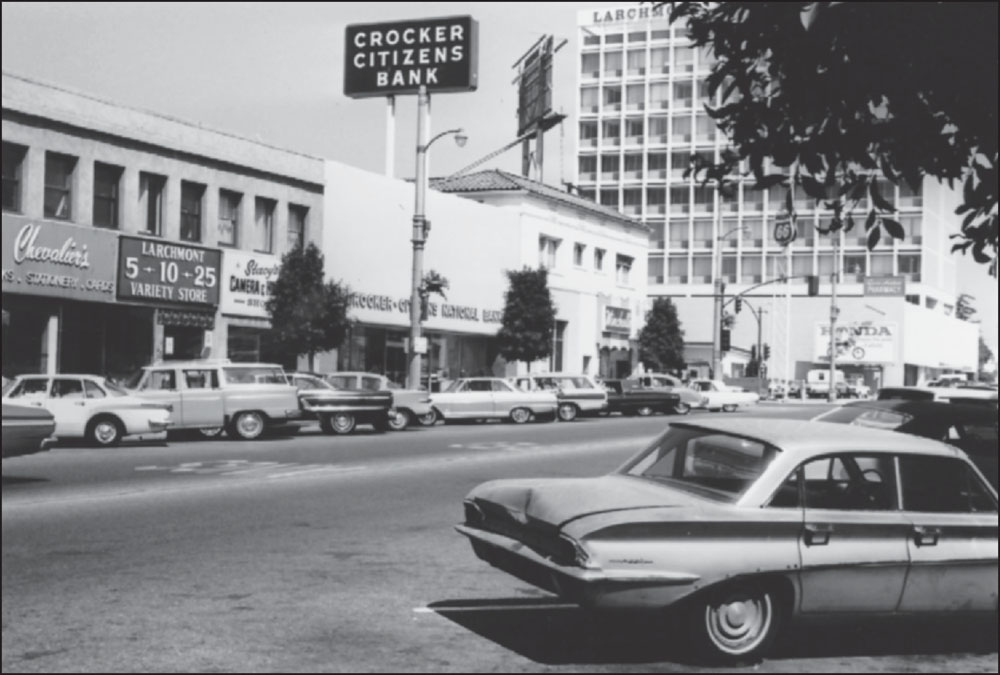
CHEVALIER’S AT 239 NORTH LARCHMONT, 1964. J.W. “Joe” Chevalier moved to Larchmont in 1940, when he opened his bookstore at 239 North Larchmont Boulevard. Chevalier was a director of the Larchmont Boulevard Association and former president of the Southern California Booksellers Association from 1962 to 1963.
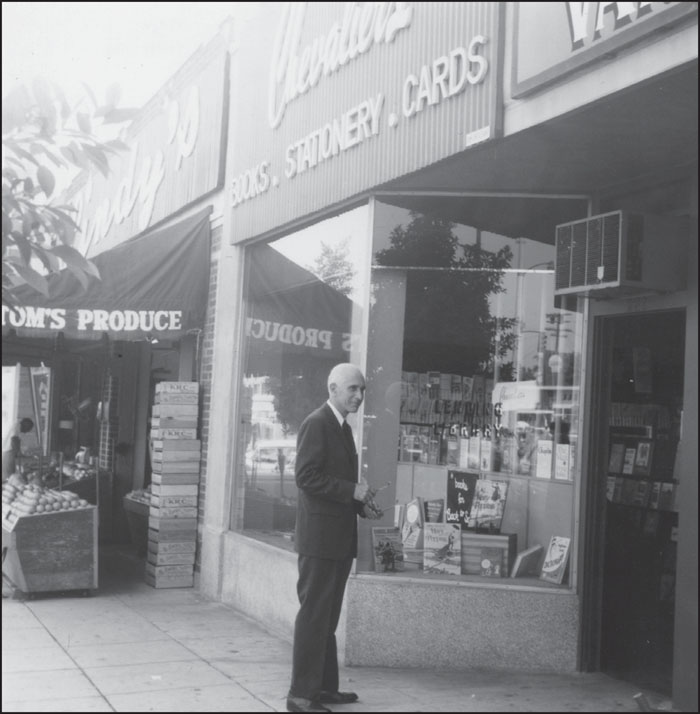
JOE CHEVALIER IN FRONT OF HIS STORE. Chevalier’s became one of the most important independent book stores in the city. New York publishing houses regularly paid visits to Chevalier, seeking his advice on how to successfully market their books in Los Angeles.
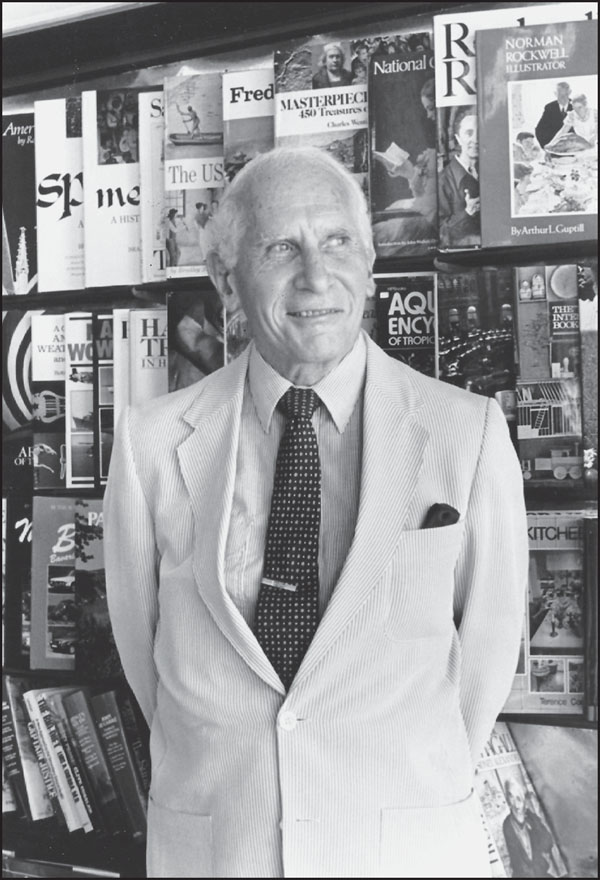
JOE CHEVALIER AT 126 NORTH LARCHMONT. Chevalier was an avid reader and loved books. His home library contained close to 1,900 books, including some rare editions.
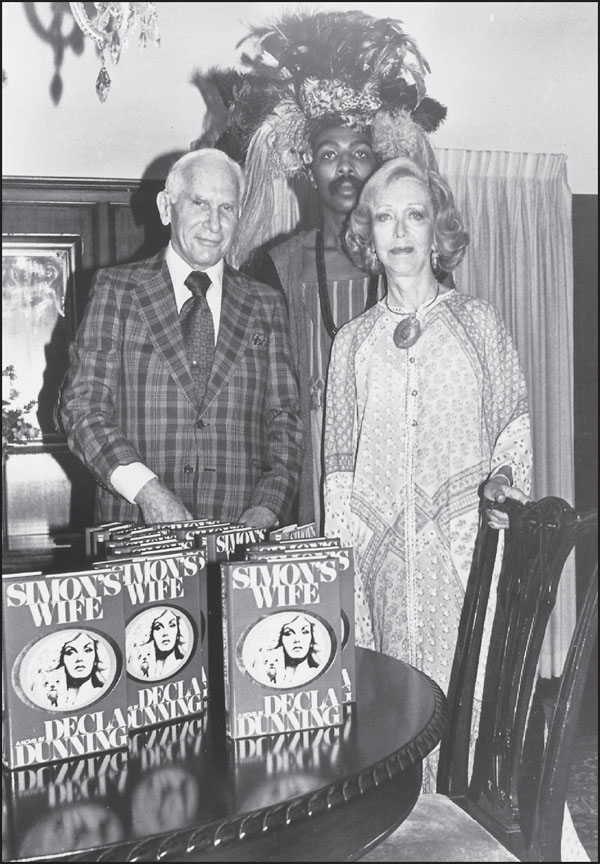
JOE CHEVALIER WITH DECLA DUNNING. Chevalier is pictured with Decla Dunning at a book signing for Simon’s Wife: A Novel, published in 1980. Dunning was a screenwriter, and her most famous feature was The Stranger, which she cowrote with Anthony Veiller and Victor Trivas. The film was directed by Orson Welles and released in 1946.
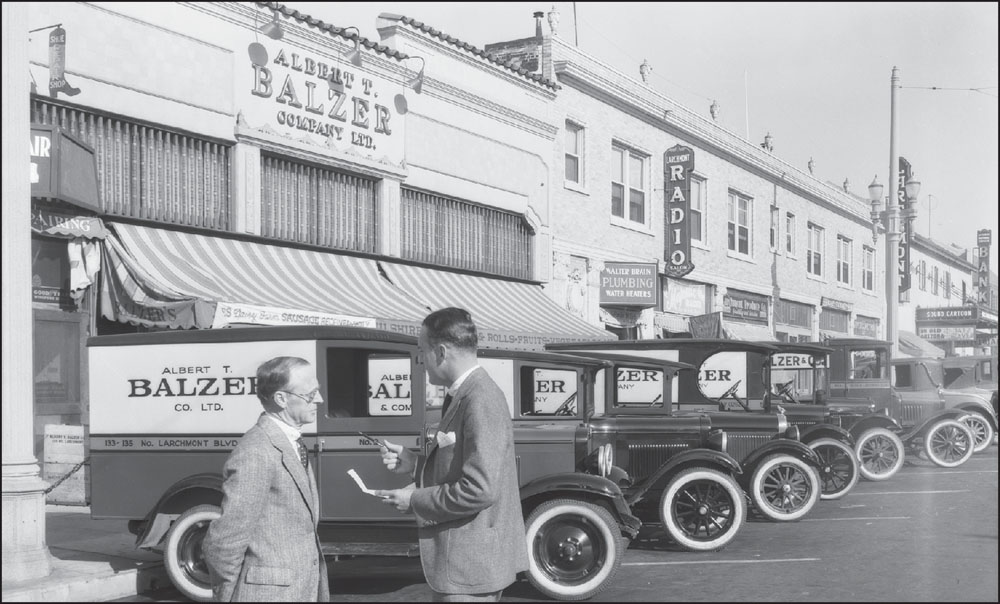
ALBERT T. BALZER COMPANY DELIVERY FLEET. Balzer and Company catered to wealthy residents, offering personal service and the finest selection of quality gourmet foods. Business was conducted by charge and delivery, and customers bought in quantity and quality. Canned goods were sold by the case. Sugar and flour were sold in sacks of 100 and 200 pounds, making delivery essential. The store sold a ton of cheddar each month. In this image, Balzer’s executives are shown in front of their delivery truck fleet for what was most likely a photograph for an advertisement. This image was taken by a photographer from Dick Whittington Studio for the firm Nelson & Price, Inc., who sold automobile tires in Los Angeles. (Courtesy of Dick Whittington Studio/Corbis.)
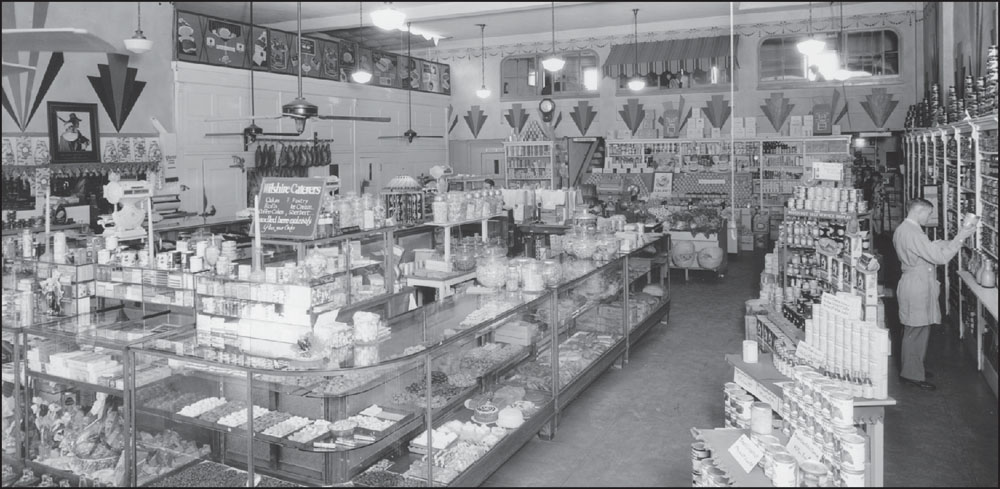
INTERIOR OF BALZER AND COMPANY AT 133 NORTH LARCHMONT. Albert Taylor Balzer started his career in the grocery business in Des Moines, Iowa. He sold his business and moved to California to get away from the cold. Balzer became part of the westward expansion of the city and purchased Hughes Market at 133 North Larchmont Boulevard in 1923. In 1926, after outgrowing the space, he moved the market—now called Albert T. Balzer Company—to a larger facility at 133–135 North Larchmont. (Courtesy of Marc Wanamaker at Bison Archives.)
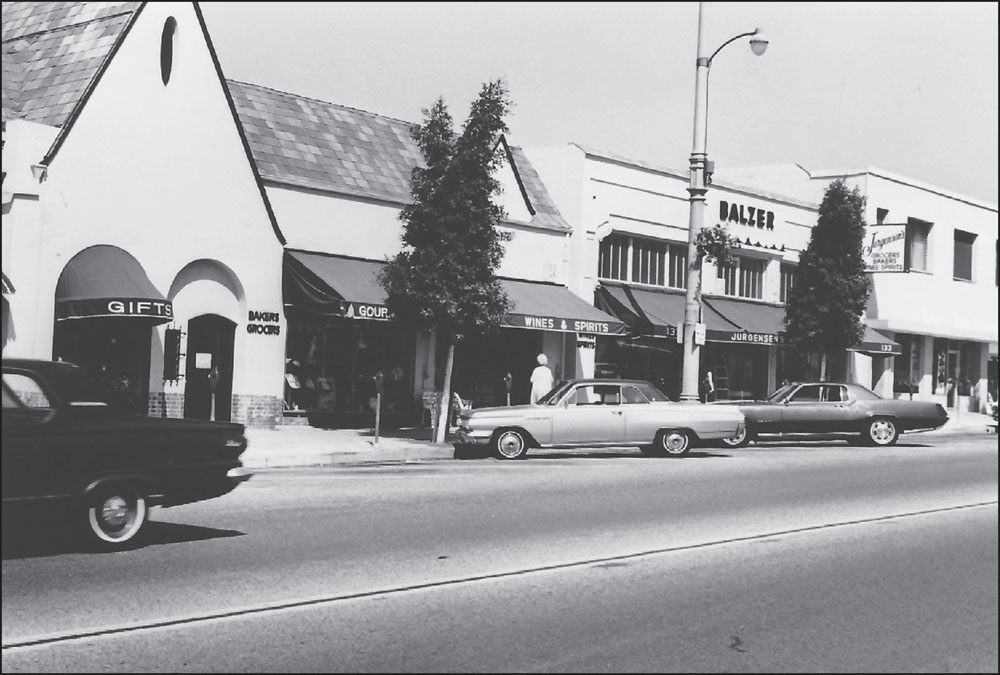
STREET VIEW OF BALZER’S AT 133–135 NORTH LARCHMONT. Balzer’s was operated by family members who learned the business and then went off to start their own stores in Hollywood and the San Fernando Valley. Balzer’s operated on the simple principle of honest business ethics and quality in every endeavor. Balzer died in 1952 at the age of 75. In 1959, Robert Balzer sold the store to Harold Jurgensen.
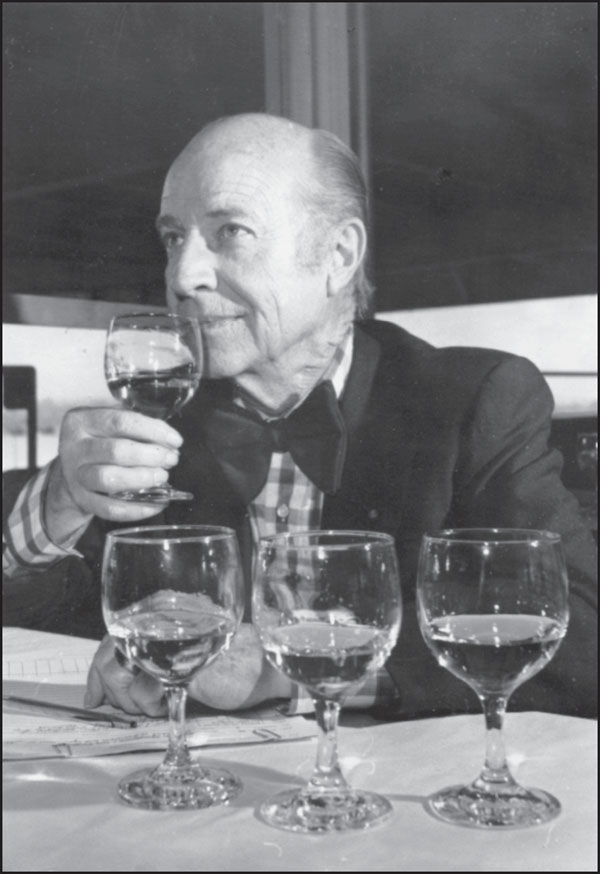
ROBERT LAWRENCE BALZER. In an autobiography in Friends of Wine magazine, Balzer notes that his great-grandfather, confectioner G.A. Balzer, catered Abraham Lincoln’s second inaugural. He joined his father’s business in 1936 after studying at the Royal Academy of Dramatic Arts in London. His father told him to buy wines, so Balzer became a student of wine and, eventually, a very influential wine columnist for the Los Angeles Times. Balzer championed the California wine industry. During his tenure, he expanded the store, opening a wine cellar and gift shop. Balzer was considered the dean of American wine writers by Wine Spectator magazine, which honored him in 2002 on his 90th birthday. Balzer was invited to oversee the inaugural party for Ronald Reagan in 1985 and George Bush in 1989.
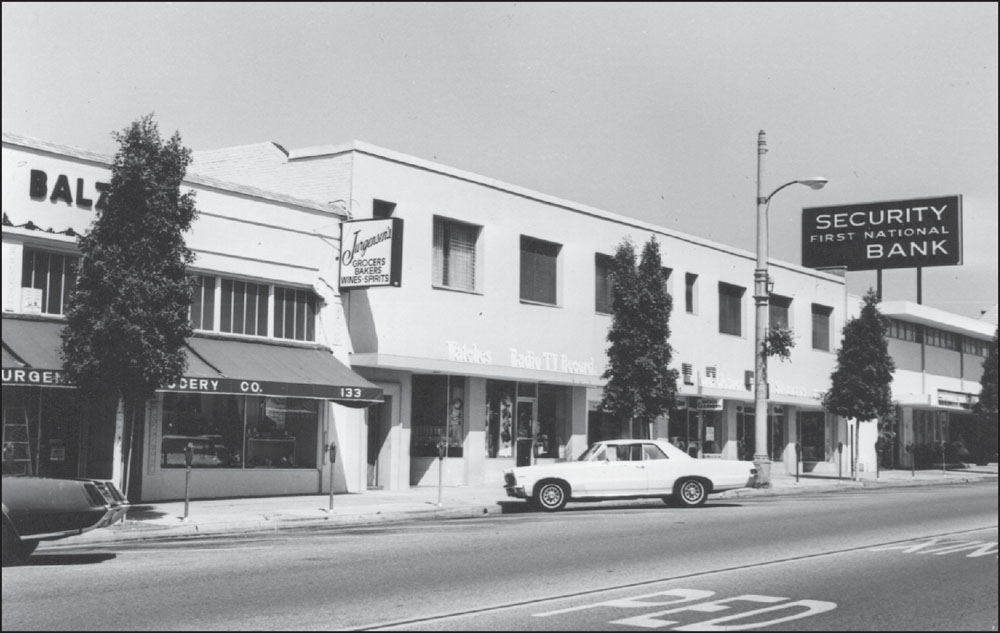
JURGENSEN’S MARKET AT 133 NORTH LARCHMONT. Customers appreciated Jurgensen’s as they had Balzer’s. Actress Mae West was reported to be a frequent shopper. Jurgensen’s was founded in Pasadena in 1935 and catered to wealthy families and celebrities who preferred to have their gourmet delicacies and groceries delivered. At one time, there were 22 stores; the last one closed in 1993. The Larchmont store closed in the late 1980s.
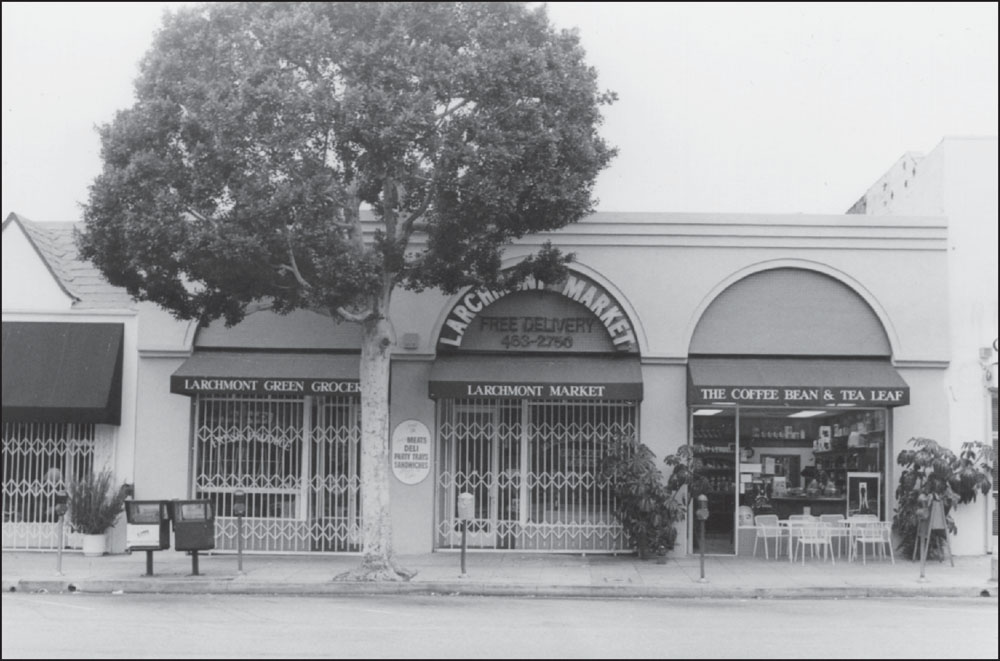
LARCHMONT MARKET AT 133 NORTH LARCHMONT, C. 1990. Various grocers tried to fill the shoes of Balzer’s and Jurgensen’s, but none had the longevity of their predecessors.
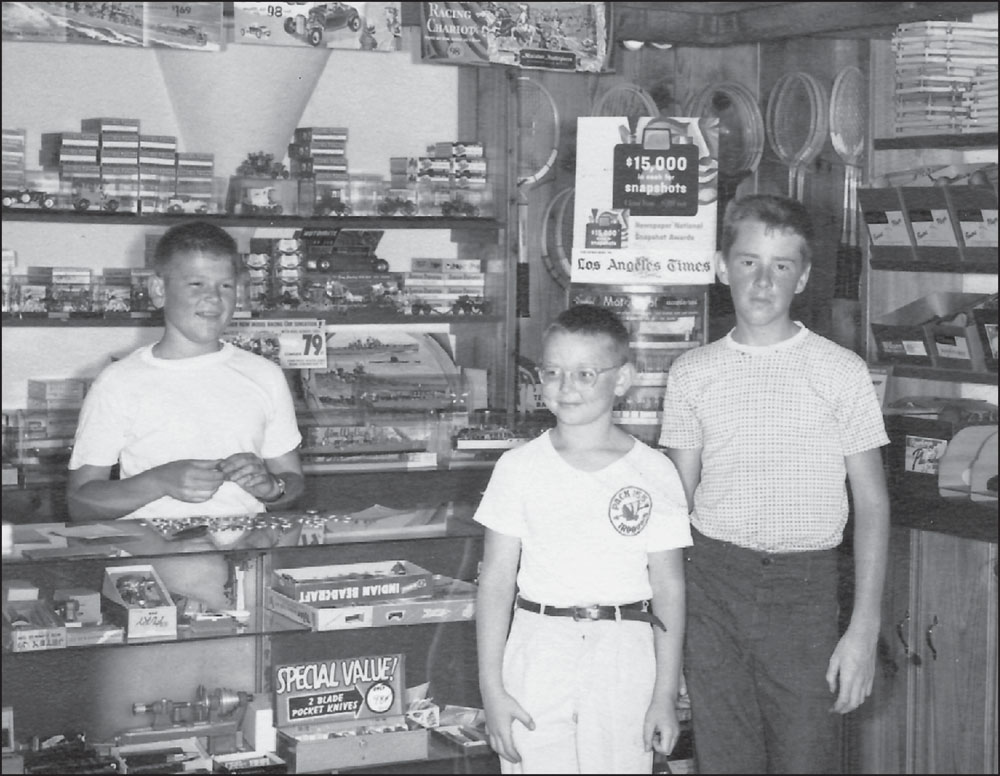
WESTERN CAMERA SPORTS AND HOBBIES AT 241 NORTH LARCHMONT, C. 1956. Enthusiastic shoppers from the neighborhood enjoy the offerings of a great hobby and sports shop.
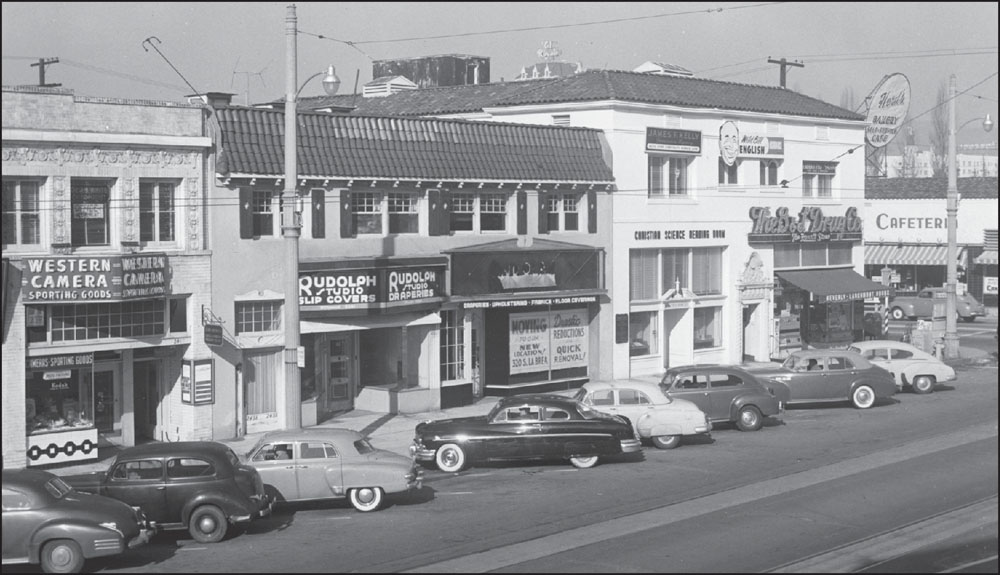
STREET VIEW OF THE WEST SIDE OF LARCHMONT NEAR BEVERLY BOULEVARD, 1952. Storefronts along Larchmont included services for the home as well as a Christian Science reading room. (Courtesy of Marc Wanamaker at Bison Archives.)
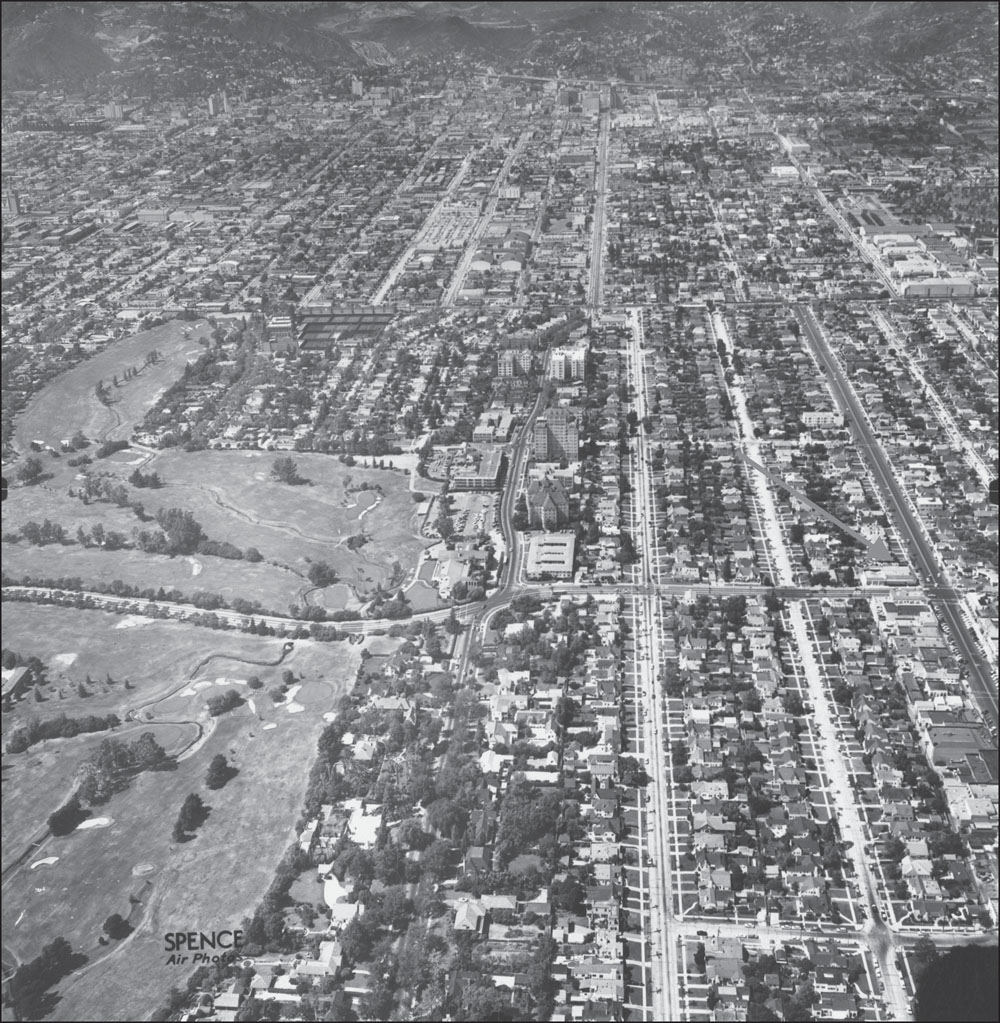
AERIAL VIEW, 1958. This image of the neighborhood looks north from Wilshire Boulevard and shows the continual growth of the neighborhoods around Larchmont. The Wilshire Country Club is on the left. (Courtesy of the UCLA Spence Air Photo Collection.)
















































